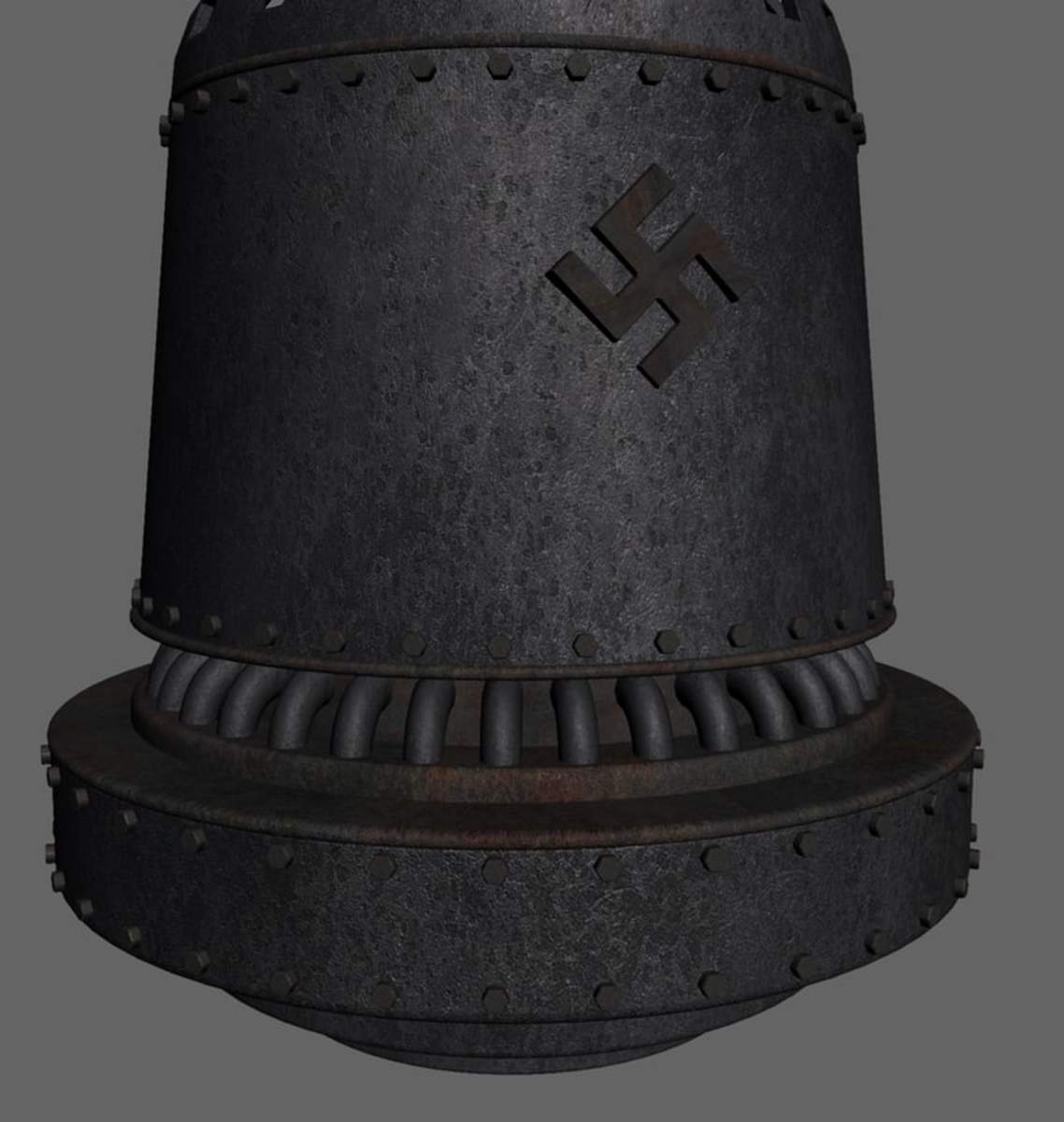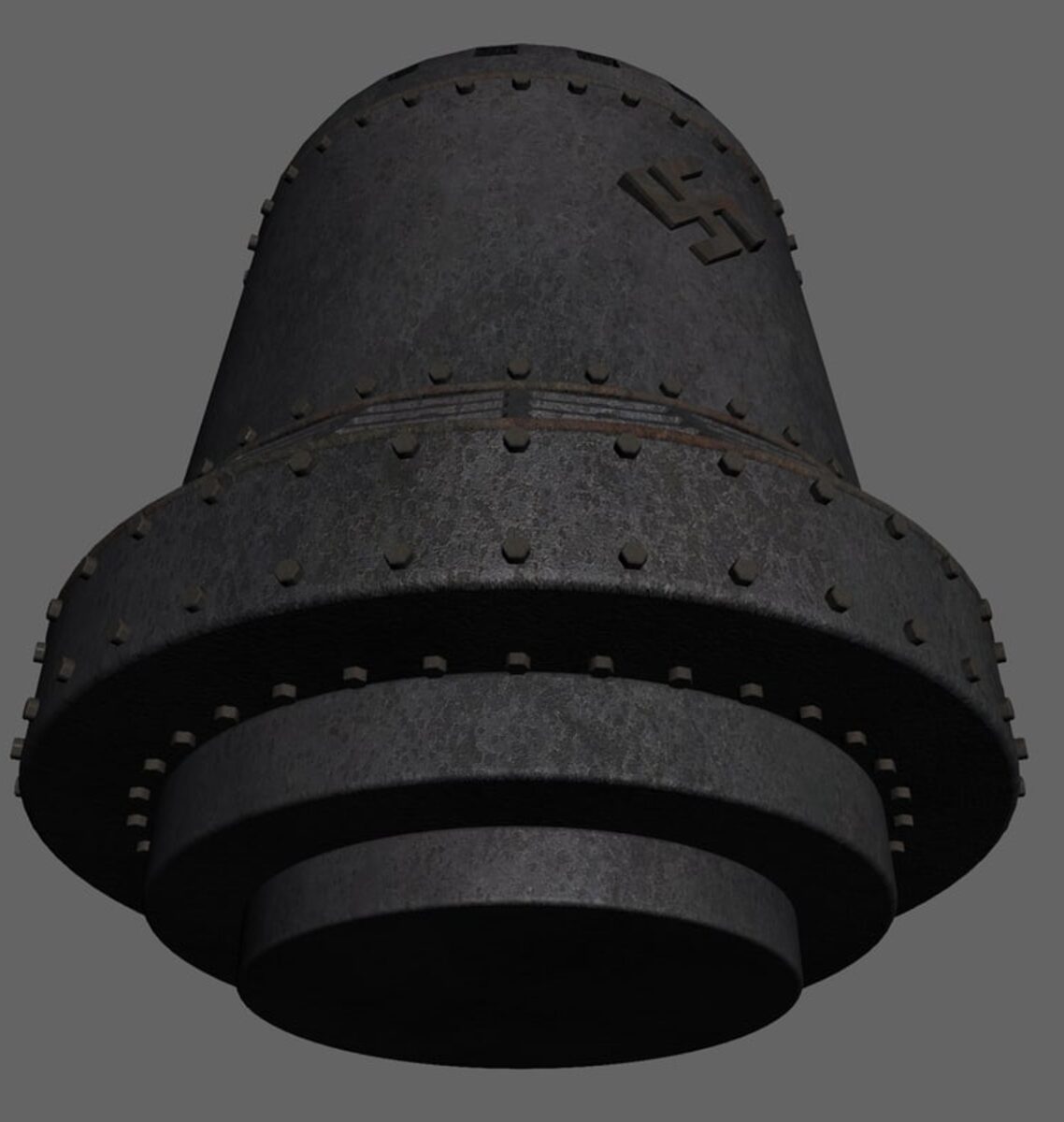- MAIN INDEX: Adolf Hitler Death and Survival: Legend, Myth and Reality
- The Final Years of WWII
- "Operation Paperclip" and Underground Bases
- How the Nazis planned a Fourth Reich...in the EU
- The Great Patents Heist in Germany after WWII
- Did Hitler Have Only One Testicle?
- Argentina
- Nazi Secret Weapons and The Cold War Allied Legend - Part 1
- Nazi Secret Weapons and The Cold War Allied Legend - Part 2
- Nazi Secret Weapons and The Cold War Allied Legend - Part 3
- The "Race" to the Moon"
- Wunderwaffen
- Hans Kammler
- Junkers Ju 390
- Mysterious German Bombs Aircrafts, and Carriers
- German Atom Bomb and WMDs - Part 1
- German Atom Bomb and WMDs - Part 2
- German Atom Bomb and WMDs - Part 3
- Die Glocke
- "Sweats"
- Hitler's Vergeltungswaffen
- The Coming of the 4th Reich
- “We can still lose this war” - General George Patton
- German "Super Science"
- Amerika Bombers
"The Bell" [German: Die Glocke] represents something at the very pinnacle of SS General’s Hans Kammler's occult and super-secret SS "wonder weapons" empire.
Nick Cook's book, "Hunt for Zero Point" presents information on this bizarre object, the equally macabre experimentation that surrounded it, and the stringent security the SS held it under.
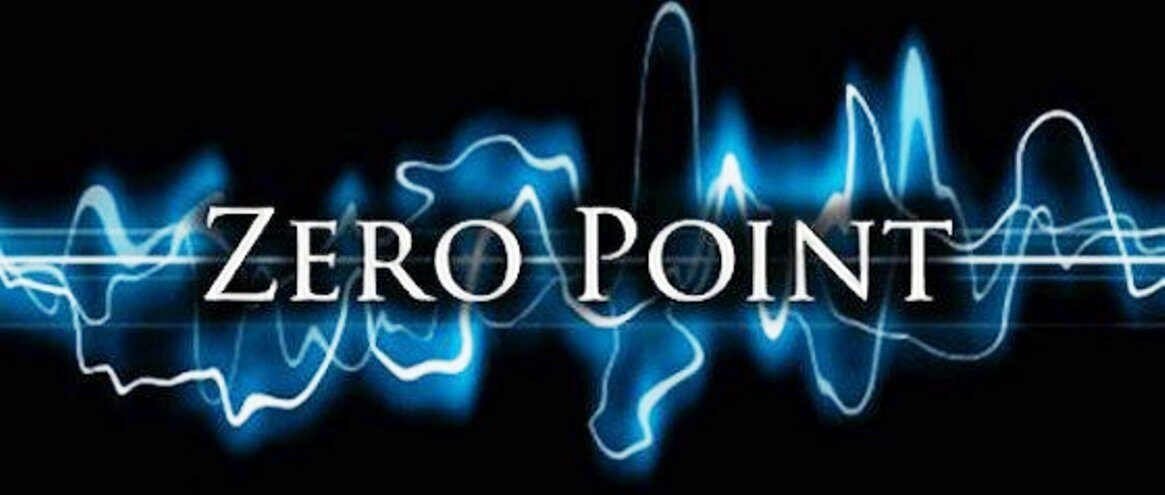
The following are the salient features of The Bell, according to Cook:
- The Bell was reportedly a metallic object, approximately 9 ft. in diameter and 12-15 ft. tall;
- It looked like a "Bell", hence its code name to the Germans, die Glocke;
- It was comprised of two counter-rotating cylinders, rotating a purplish liquid-metallic looking substance code-named "Xerum 525" by the Germans, at high speeds
- "Xerum 525" was apparently highly radioactive, being purple in color, and housed in cylinders with lead lining 3 cm [12 in] thick
- The Bell apparently required high amounts of electrical power in its operation
-
During use, it could only be run for approximately one to two minutes, as it apparently gave off strong radiation and/or other electromagnetic or unknown field effects
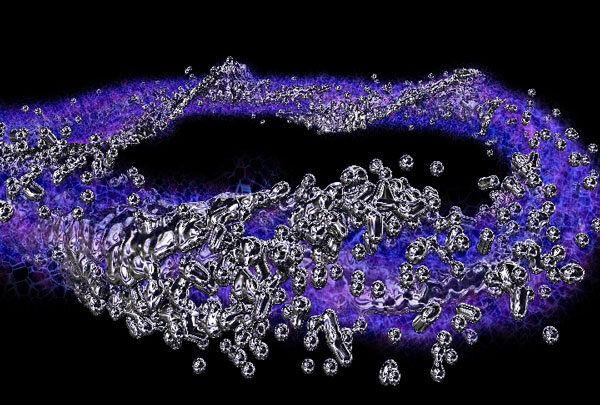
- Several scientist died on its first operation
- Subsequent tests included various plants and animals, all of which decomposed into a blackish goo and without normal putrefaction, within a matter of a few minutes or hours after exposure to its field effects when in operation;
- Technicians near the Bell during these experiments reported metallic tastes in their mouths after being exposed to it
- The chamber in which the Bell was tested was lined with ceramic bricks and rubber mats, and had to have its rubber matting removed and burned after each test, and it was subsequently washed down with brine by inmates from nearby concentration camps;
- All the scientists and witnesses who saw or worked on the Bell were murdered by the SS as the war neared its end;
- The Bell was transplanted out of Silesia to a destination that has never been discovered.
The Bell, along with General Kammler himself, simply disappear entirely from history, never to be seen again. It is believed, however, that both the Bell and General Kammler were transported by U-boat to a base outside of the Reich [Base 211 in Neu Schwabenland, Antarctica being the strongest choice].
Others suggest Norway where German troops still held that territory with another Ju-390 supposedly kept in reserve as an evacuation aircraft. - A strange "Henge" like structure was constructed by the Germans out of reinforced concrete near the facility where the Bell was located and tested.
This structure resembled a test rig for the possible test of extremely powerful propulsion devices.
Operation
The rotation of the object, and presumably the radioactive liquid-metal called "Xerum 525", suggests that the Germans were investigating the inertial and vortex properties of radioactive material when subjected to high speed rotation, as well as the resulting field effects.
It is likely that this rotation was caused by passing a current through the liquid -hence the high power consumption- but the possibility of mechanical rotation should not be ruled out
In addition to this, as German progress in jet engine turbines and Uranium centrifuges would have given them the experience to construct very high speed turbines for rotating such material for study. In this sense,
it is possible that the Bell was nothing more than two counter-rotating ultra-high speed turbines.
That is to say, the Bell may have been an ultra high speed electro-mechanical turbine of some sort, an offshoot, perhaps, of German centrifuge technology development.
The housing of this device in an underground chamber lined with ceramic brick and rubber mats suggests that it gave off extremely strong electro-magnetic or electro-static field effects as well as high heat when in operation.
The reporting of metallic tastes in the mouths of what few surviving personnel there are suggests this.
The quick decay without apparent putrefaction of organic material within its field suggests effects that some would associate with scalar waves.
But what was the mysterious "Xerum 525"?
When first investigating this strange material, the first thought is that it might be some radioactive isotope of mercury, or possibly a more radioactive substance in chemical solution of some sort.
It is perhaps worth noting that recently a strange substance known as "red mercury", or mercury antominate oxide, has been alleged to have strong neutron emitting properties when subjected to sudden explosive stress:
It is alleged to be a non-fissile method of triggering the enormous fusion reactions of hydrogen bombs, as well as being able, in its own right, of fission explosions in the small kiloton range.
Perhaps the Nazis had stumbled onto a similar such substance during the war.
Cook also notes that, at the end of the war, Kammler had special jurisdiction over a secret "SS evacuation command" that had been personally established by Reichsleiter Martin Bormann in great secrecy.
This command included jurisdiction over all of Nazi Germany's heavy-lift ultra-long range transport aircraft, including the Ju-290 and the six engined Ju-390, stationed near Prag-Kbely Aerodrome. These planes were based at the end of the war quite near the secret underground facility where the Bell was being tested.
Jakob Sporrenberg and Die Glocke
In charge of the Special Evacuation unit's "northern route" cell was a very high-ranking SS general named Jakob Sporrenberg, who was captured by the British and handed over to the Poles.
During interrogations, he let out his knowledge regarding some mysterious high-tech machine called "Die Glocke" - the Bell.
Igor Witkowski was plodding along as a low level editor of Polish technical magazines when he was allegedly contacted in 1997 by an unnamed Polish Intelligence agent, who let him read a transcript of postwar interviews with war criminal and former Nazi SS officer Jakob Sporrenberg.
Sporrenberg unsuccessfully tried to stave off his execution with fanciful tales of top secret Nazi weapons programs he had been privy to.
He told his interviewers of a mysterious high-tech machine he called "The Bell" that was capable of "vortex compression" and "magnetic field separation."
Witkowski wrote it all up in an obscure Polish-language book called "The Truth About The Wonder Weapon" that was promptly ignored.
Nominally mainstream British journalist Nick Cook latched onto Witkowski's story and retold it in his 2002 book "The Hunt for Zero Point", suggesting it was anecdotal evidence that the U.S. government has been working on Nazi anti-gravity technology in secret for the last 50 years.
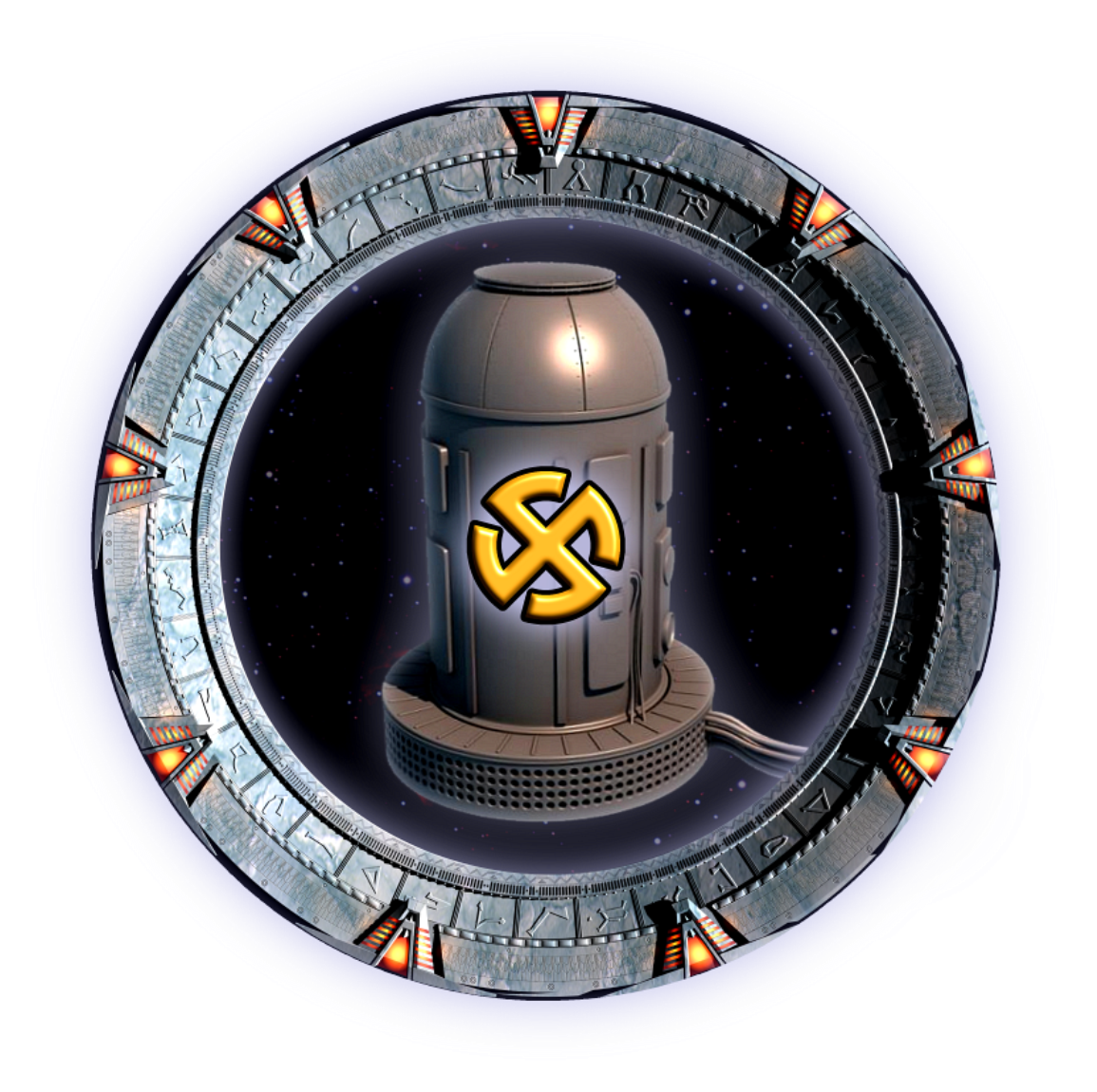
Following his capture, as much as Sporrenberg was able to divulge to Soviet Intelligence and the Polish courts about the Bell was this, Witkowski said:
The project had gone under two code names: "Laternenträger" and "Chronos" and always involved "Die Glocke" - the bell-shaped object that had glowed when under test.
The Bell itself was made out of a hard, heavy metal and was filled with a mercury-like substance, violet in color.
The experiments always took place under a thick ceramic cover and involved the rapid spinning of two cylinders in opposite directions.
The tests involved placing various plants and animals within the Bell's influence.
Almost all of them were destroyed:
A crystalline substance formed within the tissues, destroying them from the inside; liquids, including blood, gelled and separated into clearly distilled fractions.
People in the program also suffered from sleep problems, loss of memory and balance, muscle spasms and a permanent unpleasant taste in the mouth.
Many of the scientists even died as a result of their exposure to the activated Bell.
According to Sporrenberg, this enigmatic "Bell" was evacuated by the Special Evacuation Kommando before the enemy forces arrived.
So, why the hell was this "Bell" that was so important?
According to Sporrenberg, it was associated with "vortex compression" and "magnetic fields separation."
A related source suggested that the Bell had something to do with "spin polarization" and "spin resonance."
These were, Witkowski pointed out to Cook:
"Physical principles that had come to be associated with the new wave of gravity and anti-gravity pioneers - people like Dr. Evgeny Podkletnov".
Eugene Podkletnov is a Russian ceramics engineer known for his claims made in the 1990s of designing and demonstrating gravity shielding devices consisting of rotating discs constructed from ceramic super-conducting materials.
He graduated from the University of Chemical Technology, Mendeleyev Institute, in Moscow, spending 15 years at the Institute for High Temperatures in the Russian Academy of Sciences
He received a doctorate in materials science from Tampere University of Technology in Finland.
After graduation he continued research at the university, in the Materials Science department, until his expulsion in 1997.
Podkletnov's first peer-reviewed paper on apparent gravity-modification effects, published in 1992, attracted little notice.
In 1996, he submitted a longer paper, in which he claimed to have observed a larger effect [2% weight reduction as opposed to 0.3% in the 1992 paper] to the "Journal of Physics".
According to "Wired" reporter Charles Platt, a member of the editorial staff, Ian Sample, leaked the submitted paper to Robert Matthews, the science correspondent for the British newspaper, "The Sunday Telegraph".
On 1 September 1996, Matthews' story broke, leading with the startling statement: 'Scientists in Finland are about to reveal details of the world's first anti-gravity device'.
In the ensuing furor, the director of the laboratory where Podkletnov was working issued a defensive statement that Podkletnov was working entirely on his own.
P.T. Vuorinen, listed as the paper's co-author, disavowed prior knowledge of the paper and claimed that the name was used without consent.
Podkletnov himself complained that he had never claimed to block gravity, only to have reduced its effect.
He withdrew his second paper after it had been initially accepted.
The resulting furor o
ver the alleged claims in the withdrawn paper is reported to be the primary reason for his expulsion from his lab and the termination of his employment at the university.
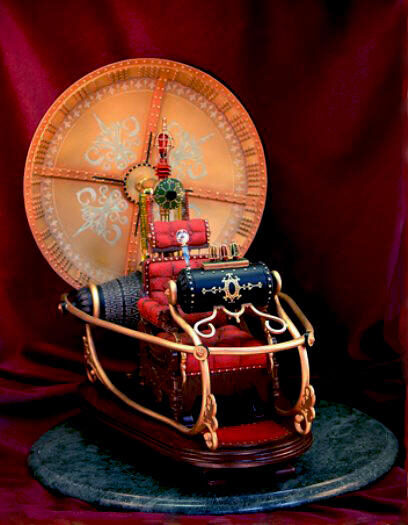 Could this be it? Was the "'Bell" an anti-gravity device?
Could this be it? Was the "'Bell" an anti-gravity device?
Could this be what Kammler and others used to make a deal with the United States?
If the "Bell" really was an operational anti-gravity machine, it would have certainly been spectacular enough to effectively seduce the victors of the war.
Actually, the "Bell" could potentially be something even more spectacular.
"Dan Marckus", an eminent scientist in one of Britain's best-known universities [Cook refrains from using his real name], who had become Cook's unofficial technical adviser, had an insight.
Cook wrote:
"Shortly before I boarded my flight at Munich, I checked my cell phone for messages.
"There were four and Dan Marckus had left three of them.
"Whatever was on his mind, I knew I was on to something, because, for once, Marckus was chasing me.
"With one eye on the departure gate and another on the clock, I called him back.
"Even over the bustle of movement in the departure hall and the static of a bad line, I could tell something was definitely up.
'I know what they were trying to do', he said simply.
"My tone softened. 'OK, go ahead. I'm listening'.
'They were trying to generate a torsion field'.
'What is a torsion field?'
"Laternenträger means 'lantern holder'.
Phosphorous in Greek mythology known as the 'lantern bearer', in Roman mythology the lantern bearer was known as Satan.
'But it's the second code name that's the giveaway. Chronos. You know what it means, don't you?'
'Yes, Dan. I know what it means. What is a torsion field? What does it do?'
'If a torsion field of sufficient magnitude is generated, the theory says the four dimensions of space are bend around the generator.
'When you bend space, you also bend time. Now, do you understand what they were trying to do?'
"I said nothing. It was Marckus who closed the loop.
'They were trying to build a fucking time machine', he said.
Henry Stevens relates a story attributed to German scientist Otto Cerny as told to then 13-year-old Greg Rowe around 1961 which alleged that a concave mirror on top of a device which seemed similar in description to Die Glocke provided the ability to see "images from the past" during its operation:
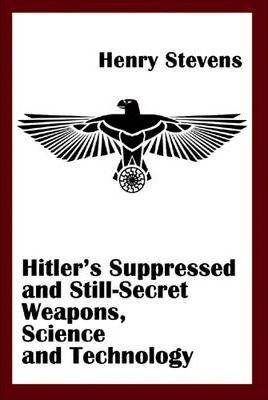 There is a German connection to time experiments.
There is a German connection to time experiments.
Some of the technology and even some of the funding are rumored to have come from Nazi Germany.
German U-Boats were said to surface off the New Jersey coast, secretly off-loading mysterious cargos. In our quest for suppressed German science, this is intriguing because most of what has actually proven to be true first originated as a story or rumor.
A great example is the story told to me by researcher Friedrich Georg.
This came to him by an individual he knows and trusts and in fact is related to him by marriage.
As a young person, this man was a soldier in the German Wehrmacht like thousands of others at the time. And like so many others, at the close of the war, in April, 1945, this person found himself in American-run prison detention camp.
There, he met a fellow prisoner, a SS soldier, with a strange tale to tell.
According to the 5S man, Hitler had a hidden facility in the mountains of the Harz region. There, deep under a mountain Hitler had constructed a time machine.
Unfortunately, this machine was no longer accessable from the surface.
Now, sixty years later, we do know that Hitler had a series of huge underground facilities in the Harz region at the Jonas Valley. Some of the exact functions of some of these facilities are still under debate today.
The reason for this, in part, is that these tunnels were sealed with explosives before the American 3'rd Army under Patton could secure them. Later they fell into the Soviet Zone but nobody ever bothered to investigate what went on down there.
As with most rumors stemming from the 3rd Reich, there was usually a kernel of truth to it.
There have always been real scientists as well as tinkerers who experiment in time, then as now, so the very fact that some physics laboratory experiments were done in those days by the Germans should be of surprise to nobody.....
In the Winter of 2002, a chance conversation occurred with a friend of mine.
His name is Greg Rowve and I have corresponded with him for several years as the result of a chance contact. Greg is a trained engineer as was his father.
Once Greg told me that his father had worked for NASA at the Huntsville, Alabama facility.
Knowing that some German Paperclip scientists worked there, I asked Greg if any of these worked with his father.
Greg replied with a list of German scientists with whom his father had worked and a few words about each one of them.
One of these, Otto Cerny, seemed particularly interesting from Greg's description so I pressed him for more information.
What follows is a compilation of several e-mails on the subject of Otto Cerny.
Cerny was Greg's father's boss.
Greg knew the whole family and went to school with Cerny's son whom Greg called by name. Greg also referred to Cerny's wife by her first name and gave other small detajls of their family life.
When he was somewhere between 12 and 14 years old, Greg and ills family were invited to dinner at the Cerny's house.
Thjs would have been between the years 1960-62. Greg sat and listened as the older men talked.
Otto Cerny was an engineer and physicist. He had worked at Peenemünde on a variety of projects. That was why he was in the Uruted States, to work on rockets, and why he was a Paperclip scientist to begin with.
But it is his work prior to coming to Peenemünde, which was the subject of discussion that night.
Cerny said that he had worked near Breslau in the early years of the war. It was there that he met his wife who worked in Breslau at a hospital where she was employed doing physical rehabilitation work.
Cerny continued describing this work that rught in Alabama, dismissing it at first as "weird experiments on the nature of time".
Greg's father must have picked up on this comment because the two men quickly became involved, according to Greg, in a deep discussion concerning the nature of time.
Greg told me that it seemed to hjm now, that, at times Cerny was a little vague in his statements, choosing his words and being careful of what he said, almost as if he were under some sort of hidden duress.
Greg listened to the two men attentively but did not enter into the conversation himself. At that time and place in polite adult company, as Greg explains, a child did not speak unless spoken to.
In considering what foUows and what was relayed to me, it should be remembered that Greg had not yet read Nick Cook's book or ever heard of the work of Igor Witkowski.
Greg remembers that Cerny drew a circle of stones, which Greg said was "like a Greek Temple", with a ring around the top".
Then Greg added a feature not mentioned by Cook or Witkowski, "and some sort of ring inside of that". This second ring was like a hoop of metal from which something hung-like an oscilloscope or a TV screen. Greg went on to mention the atomic symbol as a means of description.
The atomic symbol has a nucleus around which orbit electrons. The electrons have two orbits, one within the other and are moving independently from each other.
From this description it follows that this structure contained two movable and independently adjustable fixtures from which something hung, perhaps as with a gyroscope.
Cerny said that it was possible to "go back and witness things".
With this statement a Greg's father asked why it was not possible to go forward if it were possible to go backward. Evidently there was some discussion between the two men on this point. Cerny responded that it simply did not work that way.
Greg reports that, after a pause, Cerny cut more pastry and poured another cup of coffee, then changed the subject to a jet engine, which had been built at Peenemünde, for an unmanned rocket other than the V-l.
Naturally, I was dumbfounded by the turn of events. This was mid-January, 2002. Greg had not read my book on German saucers or Cook's book containing discussion of Igor Witkowski. As a matter of fact, Greg had never heard of Igor Witkowski. I told him of these references and sent him a copy of my book.
I quickly re-read Cook's passages on the subject. Then something else occurred to me. I quickly found my partial list of Paperclip scientists and looked for Otto Cerny's name.
Sure enough, it was there. I wasted no time in ordering the file from the National Archives under the FO.l.A. I had no idea of what to expect.
Greg had provided so much detail into their personal lives that I was a little apprehensive that my friend might have been wrong about some of this. Would the FO.l.A. file confirm what Greg overheard?
Fortunately, Paperclip files are packed with what we would call today "personal information".
Ninety days pass and the file arrives.
In it are the names and birth dates of Otto Cerny and all his family. The name Greg gave for Mrs. Cerny was correct. The name Greg gave for his son was correct, and his year of birth puts him in Greg's grade in school.
They had lived in Huntsville where Otto was employed by NASA.
There was no doubt that this was the person Greg had described and his description matched very well.
One file included a time-line and a statement of Cerny's work at Peenemünde.
Many "deletion" pages were inserted into the file telling the reader that portions of the files were being withheld for security reasons.
But the censor was somewhat uneven. It seemed that sensitive information was pulled out at various times by various censors.
Some of these censors only read English, it seemed, because the English translation of Cerny's work history consisted of nine pages while the original had consisted of twenty-five pages in German language.
Fortunately, twenty-four pages in the original German edition remained, and included a description of a previously unknown weapon.
The weapon in question was a special edition of the Henschel Hs-292.
The regular Hs-292 was a air-to-ship guided missile which was fired from a carrier aircraft, such as a two-engine He-111 bomber, and steered towards the target ship though the a thin wire linkage and an operator using a joy stick.
The new weapon was a high-altitude air-to-air weapon that was again launched from an aircraft and guided via wire and joystick but its target was not a ship beneath it but an enemy bomber formation above it.
Was this the weapon Greg had commented upon?
Unfortunately, no mention is made of experiments in time in the Paperclip file.
This could hardly be expected, however. The file had been gone over many times and items pulled for security reasons, But the time-line was very complete and in it Cerny accounts for his every move since college.
I went directly to the war years.
From May, 1939 to September, 1939, Cerny attended a flight school at Braunschweig, the Deutsche Versuchsanstalt für Luftfahrt [German Flight Research Institution].
From September, 1939 to April, 1940, Cerny worked at three Air Force test bases including one at Rechlin, which is next door to Peenemünde and was a test site for exotic aircraft.
This would put him in the proper region at the proper time.
His next assignment, May, 1940 to April, 1945 was at Peenemünde, immediately to the west.
Taken as a whole, Greg's account of what Cerny said and what Cerny's Paperclip file show are remarkably consistent.
I have to believe that the rendition concerning Cerny's work on an unknown jet engine for use in an advanced missile is factual and possibly be the new type of Hs-292.
The Henschel Hs 298 was a rocket-powered air-to-air missile designed by Professor Herbert Wagner of Henschel, specifically to attack Allied bomber aircraft.
It was the first missile designed specifically for air-to-air use, and was to be carried on special launch rails by Dornier Do 217s or Focke-Wulf Fw 190s.
The Hs 298 was a mid-wing monoplane with tapered swept back wings and had a single horizontal stabiliser with twin vertical fins.
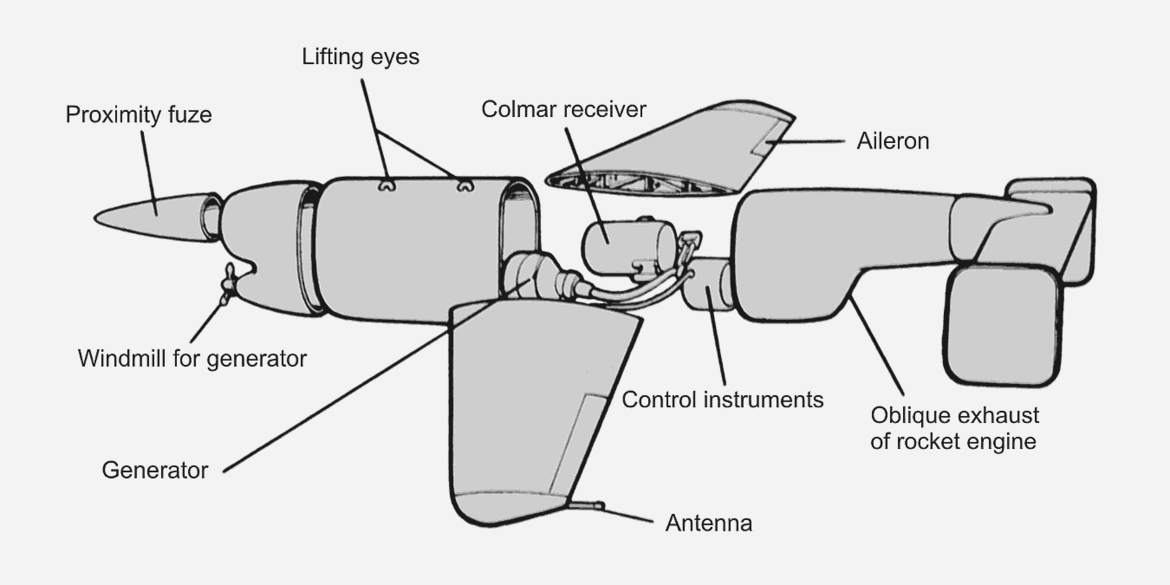
Its maximum range was about 1.5 km [0.93 mi].
It used a Strassburg-Kehl FuG 203 radio guidance system powered by a propeller-driven [mounted on the nose] electric generator.
The missile needed two crew on the launch aircraft to control it:
One operator used a reflector-type sight to aim at the target and the other flew the missile using a joystick and another sight paired to the first with a servo system.
The only known test firings were carried out on 22 December 1944 with three missiles carried by a Junkers Ju 88G.
Only two missiles left the launch rails with one failing to release.Planned to enter mass production in January 1945, the project was abandoned in favour of the X-4.
I also must believe that Cerny was telling the truth when he said that prior to coming to Peenemünde he worked on a German program involving time experimentation.
What he disclosed fits into the evidence provided by Mr. Witkowski and provides some new data.
The details of this program remain yet to be discovered as does its place in the German war effort.
Based upon my new respect for the possibility of German time experimentation, I contacted Thomas Mehner, the researcher and publisher famous for his work at the Jonas Valley site in Germany.
I asked Mr. Mehner about references to German time experimentation one finds here and there and if he knew of any such evidence coming from the Jonas Valley.
Mr. Mehner replied via e-mail on 7 September 2003 that there was no hard evidence for German time experimentation, but there were hints.
He said that recent opinion among researchers there [so there must be ongoing discussion of the possibility] is that time machine experiments would originate at least 200 meters below the surface.
There has been no attempt to describe the technology involved at Jonastal and no attempt yet to dig it up. This area is still, today, a German military base.
The most exciting statement made by Mr. Mehner was that recently, researchers there are of the opinion that the Germans experimented with what he described as "inter-dimensional trips".
If this is ever proven, it would be just as explosive as successful time experimentation itself.
There is another story that comes to mind that now rests squarely in the realm of science fiction.
It appeared in a 1997 edition of the magazine "Wissenschait ohne Grenzen" which was responsible for placing the concept of the lost underground facilities at Jonastal in the public eye.
This tale involves the disappearance of up to 3,000 people. These people included SS personnel and scientists.
Just prior to capture by Patton's 3rd Army, these people including their women and children, all of "pure Aryan origins", disappeared down into an underground facility in the Jonas Valley called "Burg". After the people were inside the entrance was then sealed with explosives.
It should be noted that this is not referred to as a mass suicide. We are left with the impression that these people wished to escape the 3rd Reich.
So many other wild rumors of the past have been based upon fact. Could this escape have been into another time or another dimension? Could it really be true?
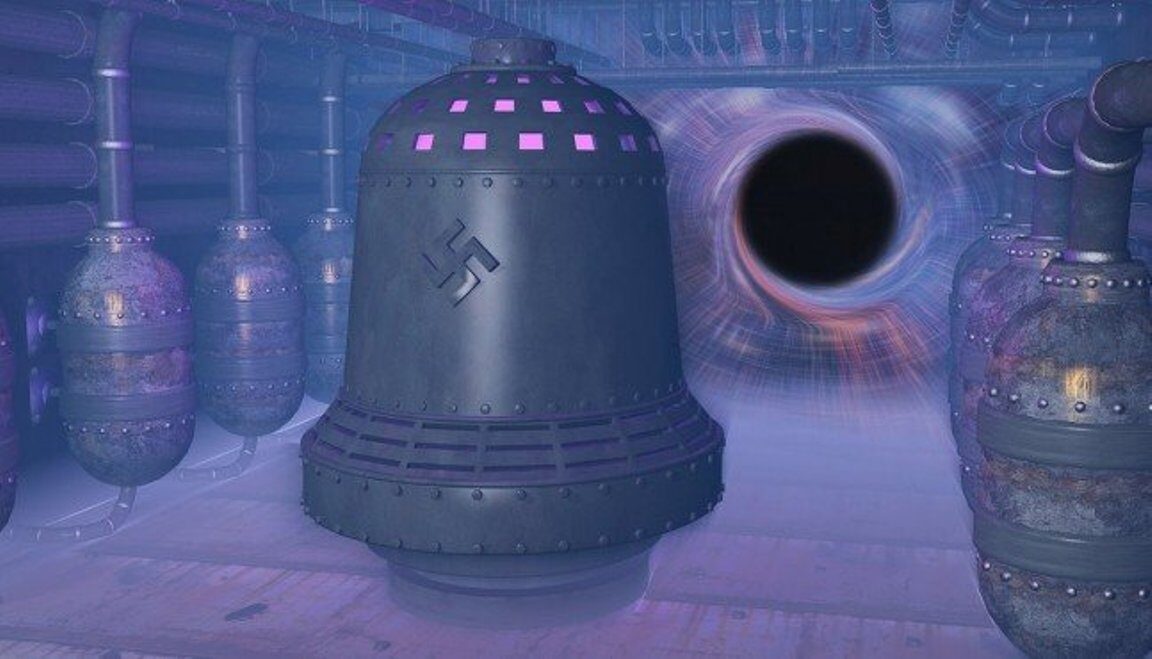
Thousands of prisoners from the Buchenwald concentration camp under the command of SS General Hans Kammler were forced to dig 25 tunnels into the surrounding mountain and the whole operation was performed under the strictest secrecy.
The site was not completed and construction was abandoned before the end of the war.
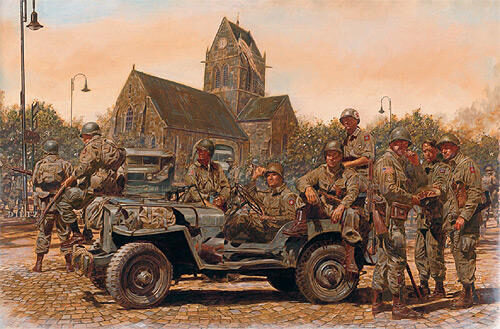 he exact aim of the operation remains uncertain:
he exact aim of the operation remains uncertain:Although it is now believed to have been either a potential final headquarters for the Führer Adolf Hitler, a military communications post or a possible center for V-2 rocket and Wunderwaffe weapon production and research.
The latter is given some credence by the fact that SS General Hans Kammler was in overall charge of the construction efforts.
The camp was the first Nazi concentration camp liberated by the U.S. Army.
After the fall of the Berlin Wall, the site was taken over by the German armed forces who continue to use the area.
Many believe that this was a site for testing atomic bombs or a production site for the "Amerika" rocket and even a site for Nazi UFOs.
This, however, does not prevent the site from being regularly visited by explorers and would-be treasure hunters who risk arrest and a fine if caught.

Debunking "Secret Nazi Time Machine"
Matthew Ellard
1 December 2011
This is an invented publishing "conspiracy" for commercial gain. There are two culprits.
The first culprit was a contributor to" Jane's Defence Weekly" prior to 2001 and an author of non-fiction and fiction books.
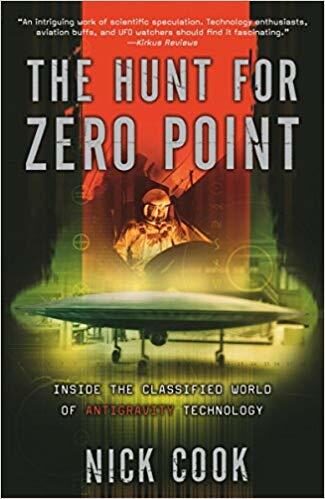
His name is Nicholas Cook.
He authored a book called "The Hunt for Zero Point: Inside the Classified World of Anti-gravity Technology".
This book is written in the first person and mixes together half truths concerning real German technological activities and a little bit of invention.
The secret German time machine is "Die Glocke" [The Bell].
For skeptics the warning bells are obvious.
On the USA Nation Public Radio program "Fresh Air" Nicholas Cook stated:
"I am not a scientist, but I enlisted some help".
That scientific help was from "Dr. Hal Puthoff [who] is pioneering this whole zero point energy field".
Skeptics may remember Dr Hal Puthoff as the man who endorsed Uri Gellar.
In 1967, Puthoff earned a Ph.D. in electrical engineering from Stanford University.
He then worked with, and invented, tunable lasers and electron beam devices, concerning which he holds patents.
Puthoff published papers on polarizable vacuum [PV] and stochastic electro-dynamics topics; examples of alternative approaches to general relativity and quantum mechanics.
In the 1970s and '80s Puthoff directed a CIA/DIA-funded program at SRI International to investigate paranormal abilities:
He collaborated with Russell Targ in a study of the purported psychic abilities of Uri Geller, Ingo Swann, Pat Price, Joseph McMoneagle and others, as part of the Stargate Project.
Both Puthoff and Targ became convinced Geller and Swann had genuine psychic powers. However, Geller was caught using sleight of hand on many other occasions.
The second culprit is another author, Igor Witkowski, through his slightly earlier book "The Truth About The Wunderwaffe".
It is a complete fabrication as clearly debunked::
Witkowski claims to have discovered the existence of the alleged German secret project 'Die Glocke' from transcripts of an interrogation by Polish authorities of former Nazi officer Jakob Sporrenberg.
Witkowski claims to have been able to read the transcripts through the help of an unnamed Polish Intelligence officer.
No primary documentation, aside from Witkowski's account, exists for the weapon.
Jakob Sporrenberg served in the Nazi occupation regimes in Poland and Norway. He never served in a scientific or technical capacity with the SS.
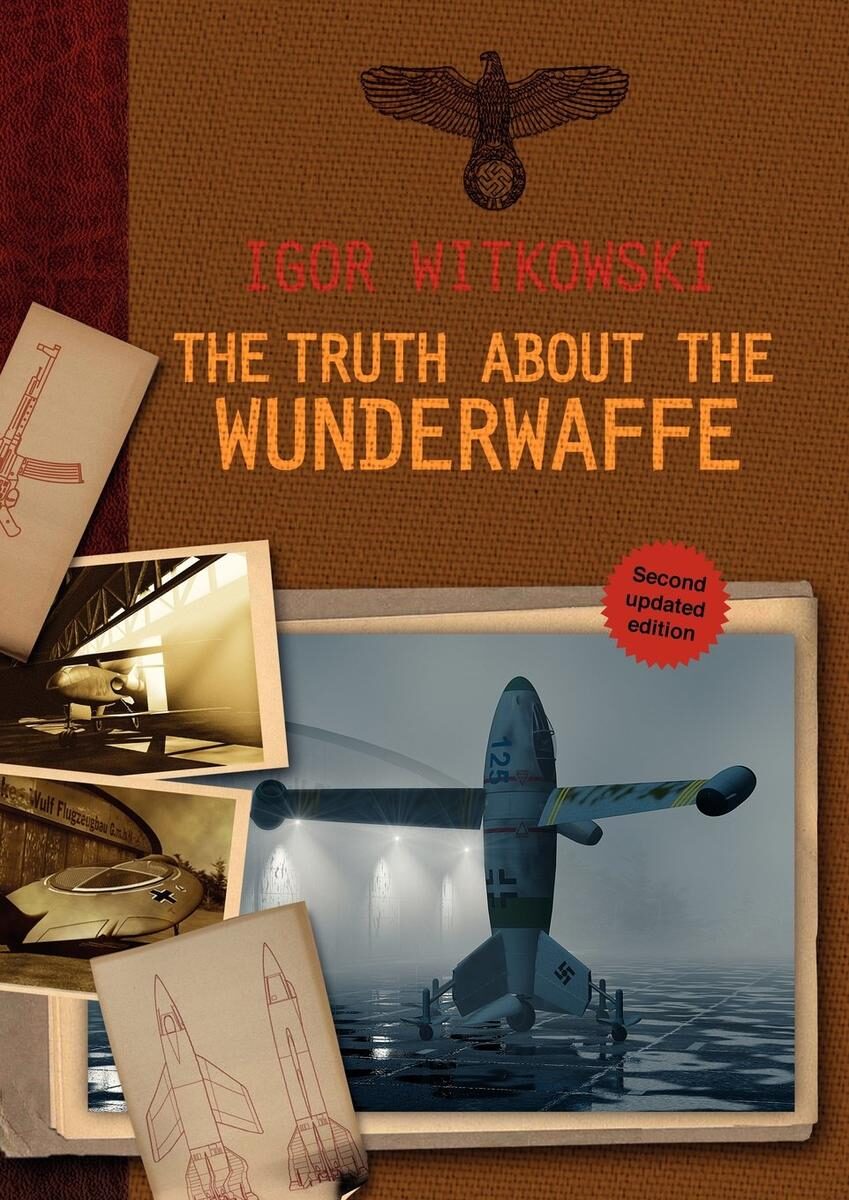
Mainstream belief tends to oppose the existence of such a weapon as the Bell and classify it as an Urban Legend.
To the contrary of mainstream belief, many people believe in such a weapon, and not just that, they also believe that it had sinister intentions.
Die Glocke has become a popular subject of speculation and a following exists around it and other alleged Nazi "miracle weapons" or Wunderwaffen.
Mainstream reviewers such as former aerospace scientist David Myhra express skepticism that such a device existed..
Author Jason Colavito wrote that Witkowski's claims were "recycled" from 1960s rumors of Nazi occult science first published in "Morning of the Magicians":
He describes Die Glocke as "a device few outside of fringe culture think actually existed. In short, it looks to be a hoax, or at least a wild exaggeration".
There are many documents and investigations on TV and the Internet that state the Third Reich was doing incredible research before the end of the war in 1945.
Aside from weaponry and advanced aircraft, it was also believed that the Third Reich scientists were working on a supposed time machine.
Was the Nazi Bell used to travel back in time?
Physics shows that traveling in the past is very difficult, and there is a paradox known for that specific type of time travel called the “Grandfather Paradox”.
What this paradox means is that if we traveled back in time and killed our grandfather, our father would not be born and we would never be born.
There is also a quantum physics theory that is called "Many-Worlds", and it states that every conceivable timeline exists in separate parallel worlds, and is equal as the world we inhabit.
On the other hand, wormholes are tunnels made out of space-time fabric that connect very far distances in space in a much shorter distance.
Space-time fabric was proposed by Einstein back in the days [1915 to be exact].
Wormholes exist naturally, theoretical physicist John Weeler said.
It’s possible wormholes to appear spontaneously anywhere and to suddenly disappear, and he has a hypothesis called “quantum foam hypothesis” backing it up.
Nazi Bell Project
Put most simply the Nazi Bell was in fact a heavy particle accelerator used as an artificial neutron source to breed Protactinium 233 from Thorium 232.
Protactinium would naturally degrade after 27 days into pure bomb grade Uranium 233.
Heisenberg advocated this method at the Harneck Haus conference in July 1942.
He worked closely with Swiss engineer Dr Walter Dallenbach at a secret facilty known as "Forschungsstelle D" to develop the Nazi Bell.
It harnessed the fluorescent quality of Mercury to cause collisions between electrons and photons, which in result released thermal neutrons.
The device was surrounded by a concave beryllium mirror to reflect neutrons back into a mass of Thorium oxide placed at the core.
The machine generated this X-Ray plasma in orbit around an axle which spun two carefully phased contra rotating drums.
How the Story Emerges
The V-1 and V-2 had been locked in a competition for mass production to be decided in July 1943. The V-2 more correctly known as the A-4 had suffered repeated failures during testing.
On 26 May 1943 therefore Hitler directed a commission consisting of Armaments Minister Speer, Air Marshall Milch, Grand Admiral Dönitz, and Field Marshall Fromm to view launches of competing V-1 and V-2 missiles at Peenemünde.
The V-1 however failed to impress during tests so a decision languished. Hitler wondered could either weapon deliver a conclusive blow against England?
Beset with anxiety at a conference of aircraft manufacturers at Obersalzberg on 23 May 1943, Hitler demanded a new bomber capable of bombing England “night and day.”
This was by no means an easy task.
The best German bomber, the He-177 faced slaughter over British skies due to the Luftwaffe’s failure to gain air superiority and would soon lack trained aircrews.
Ernst Heinkel stepped up to Hitler’s challenge and offered the extreme high altitude He-277, able to fly much higher than any Allied fighter planes.
By August 1943 Heinkel’s He-277 bomber design was ordered into production development, but what was the purpose of this new bombing campaign?
Phosphorous Connection
In August 1943, co-inciding with plans to renew attacks on England, codename "Thor" was dropped from the Nazi Bell. Two new codenames replaced it. One was "Laternenträger", the other "Kronos".
In 1943 Hitler was contemplating to use both nuclear weapons and Tabun-B nerve gas against England.
The Nazi Bell's main involvement with Laternenträger is hard to grasp but may have involved mass production of radionuclides for a dirty nuclear weapon to spread radioactive dust over England or European battlefields and testing of biological effects.
The Nazi Bell project was based in Silesia around Breslau [modern Wroclaw] and in the nearby Sudeten mountains. Silesia was famous for mining coal and phosphorous.
Gross Rosen, provided Nazi Bell with forced labour, but it also supported to three nerve gas facilities near Breslau producing the nerve gases Tabun, Sarin and Soman.
The so-called Trilon gases. Phosphorous was the vital key ingredient to their manufacture.
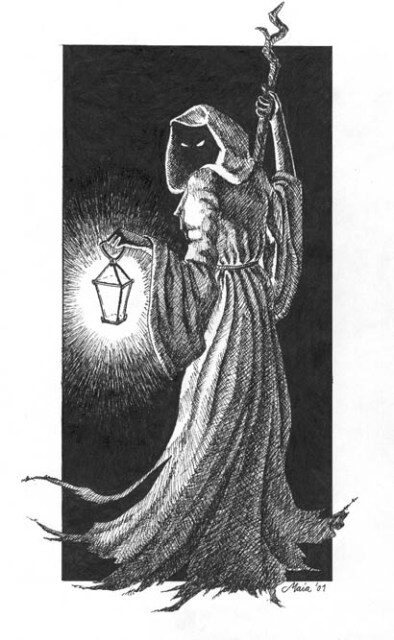
Phosphorous from Greek mythology, is known as the “lantern bearer” [Laternenträger]:
In Roman mythology the lantern bearer was known as Satan.
Rainer Karlsh’s book, "Hitler’s Bombe" relates that a team of physicists from Leibig University at Giessen carried out a lot of research at Ludwikowize, which is where the Nazi Bell was located.
Sporrenberg commented on various animals and personnel dying horrible deaths after exposure to the Bell.
He said their flesh would liquify.
Giessen is north of Frankfurt am Main and it's research appears focused on genetics and biological research.
Was this ghastly research to discover what radiation could do to Germany's enemies?
'Laternenträger' presumably refers to medical and biological experiments with radiation.
It may also refer to the weaponisation of nuclear material produced by the Bell.
Laternenträger research was based at Fürstenstein Castle according to Gross Rosen camp survivour:
Professor Mieczyslaw Moldavia.
According to him, researchers at the Castle were also investigating and testing pressure suits for a manned V-2 rocket.
It was known as the A-9/A10, and was part of a manned two stage rocket for attacking New York.
A design study was initiated for a manned A9.
This version replaced the 2,200 lb warhead of the V-2 with a pressurized cockpit.
SThe intended mission of this high-performance manned missile was strategic reconnaissance.
A ramjet engine and associated fuel tankage were to be added to provide power for cruise flight:
Llanding gear and flaps would enable landings on conventional runways.
The radical vehicle would have had performance comparable to the US X-15 experimental hyper-sonic rocket plane of the late 1950s.
An even more advanced version of the A9 was planned to be used to attack the US from launch sites in Europe.
In order to do so, an additional booster stage, the A10, was necessary.
An initial report on the concept was issued by Peenemünde's propulsion expert, Dr Walter Thiel, on 18 December 18 1941, immediately after the US entered the war.
The inter-continental A9,, nested in the nose of the A10, was equipped with radically modified, highly-swept wings for a trans-Atlantic glide beginning at hypersonic [greater than Mach 5] speeds.
The A10 itself was about 65 feet long and was equipped with a 375,000 lb thrust rocket engine burning Diesel-grade oil and nitric acid.
During its 50 second burn, it could accelerate the A9 to a speed of about 2,700 mph and an altitude of about 15 miles.
With the A9 installed, the composite rocket would have stood about 84 feet tall.
Peenemünde rocket group research on A9-influenced cruise missiles continued in the US from 1946 through about 1952 under the US Army/General Electric "Project Hermes" guided missile effort.
The project was also known as Kronos [Saturn] which refers to spin polarisation plasma physics.
Thus it could easily be inferred that the rings of Saturn represent the plasma torus inside the Bell.
The Bell exploited spin polarisation of atoms to create a plasma, it would be entirely fitting to apply Kronos to Gerlach's scientific role.
The final, but the most well known code name was Die Glocke. The meaning behind this code name or its association is entirely unclear.
In August 1997 a Polish Intelligence officer with access to Polish Government documents made writer Igor Witkowski aware of the Nazi Bell. Original documents came from war crime interrogation of former SS Lt General Jakob Sporrenberg after the war.
According to Witkowski whilst working as a military journalist, an undisclosed member of Polish military Intelligence showed him some interesting documents. Witkowski recieved discreet access over a period of a month during which he transcribed files by hand.
These documents have not been independently verified, however there are several less well detailed corroborations of the Bell project from entirely different sources.
Witkowski read of a centrifuge device shaped like a Bell with hemispherical domed top. The outer Bell was made of a three inch thick ceramic material, much like a high voltage insulator. Said to be 9 feet in diameter and 12-14 feet high. It consumed prodigious amounts of electrical power and glowed violet-blue when operated for short periods.
Inside the Bell were located two contra rotating drums. [1] Mercury [alternate accounts say amalgams of mercury] was spun inside these drums. Jelly like compounds of Beryllium with Thorium were located in flasks within the central axis. Beryllium compounds in use were called “Xerum 525.”
During WW2 jelly like parraffin was used as a moderator in some reactor experiments, thus by iimplication Xerum 525 most likely contained Beryllium and Thorium suspended in Parraffin.
Dr Ing Ernst Nagelstein visited a conference in Switzerland on 2 November 1944 where he disclosed to an OSS agent present that Auer was refining Thorium to metal and there was no known use for Thorium.
He also reported that Otto Hahn was working on A-bomb using either Uranium or Thorium
Thorium was mined in Silesia near the Bell's location. Even larger stocks were available in France. When the Allies landed at Normandy in 1944, Germany urgently shipped tons of French Thorium eastwards deep into Germany by rail. Why ship it so urgently and what made it so important?
Location
The Nazi Bell was initially housed in a basement beneath the Charity hospital in Berlin and thus the project was known as Charite Anlage.
From November 1943 the Nazi Bell was housed in an underground laboratory beneath Gandau airfield on the western outskirts of Breslau, now known as the Polish city of Wroclaw.
Xerum 525 compounds were supplied from a laboratory in the city of Danzig now known as Gydina. After operation the spent and altered compound was reprocessed at a laboratory west of Breslau then known as Neuberg.
It was shifted from Gandau in November 1944 to Fürstenstein Castle and later in December 1944 located inside Wenceslas mine. Following the war Professor Manfred von Ardenne led two Soviet scientists Nicolai Flyerov [aka N.I. Frolov] and Igor Kurchatov to the Wenceslas mine and gave them a description of installing what he called a cyclotron in the mine.
This mine was abandoned before the war. Above ground there was a power station with two steam cooling towers. The bases of these have become known by various names like the "Henge" after Stonehenge, or the Fly Trap. Bizarre claims are made by some that these are related to Nazi UFOs.
Near the mine entrance Nobel Dynamit AG operated a bullet manufacturing plant. Wenceslas mine was also known by its codename Komplex Milkow. A short distance away was Ludwikowice.
The area in wartime had been part of Germany's Silesia region, but after the war most Germans were forced into East Germany and their homes were turned over to Polish refugees. In German the village was called Ludwigsdorf.
Witnesses
A constant criticism of the Bell story is that it is a myth based entirely upon the unverified claims of Polish author Igor Witkowski. In fact there are others who contribute small portions of the story who are also witnesses to the Bell at Ludwikowice.
- SS Lieutnant General Jakob Sporrenberg, Police Chief [ie Gestapo] Lublin [occupied Poland]
- SS Hauptsturmfuhrer Rudolf Schuster, from interrogation report at Berlin Document Centre about evacuation of the Bell by air in 1945.
- Dr Wilhelm Voss, Chief Executive of Skoda Works, Czechoslovakia given to Tom Agoston
- Soviet plasma scientist G.N. Frolov in 1983 interview referred to Prof Baron Manfred von Ardenne as first hand witness.
- Railway employee from Opole, Joachim Ibrom
Ibrom recalled after the war shunting transformer equipment on rail carriages into the Wenceslas Mine for experiments on the machine.
What he described resembles a Marx Generator and interestingly one of four identical “Nazi Bell”devices built by Siemens at their Lichterfelde laboratory near Berlin.
The device itself was evacuated east to escape bombing and according to Professor Manfred von Ardenne was one of two super cyclotron devices installed at the Wenceslas mine.
Heisenberg called it a super Klystron. Siemens Chairman Herman Bucher called it a particle accelerator for the Nazi Atomic Bomb project.
Karl Wirtz described it in Farm Hall transcripts as requiring electrical power input to be harmonised to the spectral wavelengths of atoms.
At Farm Hall Heisenberg also talked about the project to harvest Protactinium for the Nazi atomic bomb, yet our history books are silent on this project.
Heisenberg’s speech notes from the Harnack Haus conference of 1942 recently recovered from KGB archives disclose Heisenberg advocated a project to harvest Protactinium.
- Dr Otto Cerny [whilst working at NASA, recounted Nazi Bell to Greg Rowe]
- Argentine Economic Ministry report declassified 1993 refers to Bell being unloaded in Argentina from a multi-engined German aircraft in May 1945
Other individuals who may not have first hand witnessed the Bell device itself have also contributed to understanding the project surrounding the Bell. Dr Ronald Richter strove to recreate the Bell project in Argentina after the war and the dismantling of his Bell device under political pressure applied upon Argentina in 1952 grant further insights.
It is also worth noting that Ardenne disclosed to Frolov that whilst Ardenne had installed one cyclotron like device in the mine at Ludwikowice, he said there was already another one inside the mine. At Bissingen in April 1945 the French captured what appears to have been another, incomplete Bell device created by the Swiss scientist Dr. Walter Dallenbach.
When ALSOS reached the Austrian town of Melk they came across another nuclear project with what was termed a transformer room. Dr Rolf Wideroe after the war referred to a device known as an X-ray transformer which also appears to be the Nazi Bell.
At least four such devices may have existed including Bells at Melk, Bissingen and Ludwikowice. Furthermore a giant underground transformer room at Jonsthal may have contained yet more Nazi Bell machines. The contents of Jonsthal remain classified by US authorities.
The Nazi Bell is intimately connected with the work of Swiss Plasma physicist Dallenbach's work with Forschungsstelle D.
Dallenbach was contracted by AEG and his laboratory was located at Bisengen in Germany just north of Zurich.
Dallenbach scrupulously avoided giving any impression that he was anything other than a neutral during the war, however he was a fervent Nazi and several slip-ups by Nazi officials and his own deputy, revealed that he was working on an atomic bomb project vital to Germany's war effort.
Dallenbach himself maintained his work was pure research yet during his time in Germany the Nazis refused to fund any scientific work not vital to the war effort.
Secret Code Names
Numerous Top Secret codenames are associated with the so-called Nazi Bell. The term Nazi Bell however is just a modern affectation, due to the device's resemblance to a Bell.
When the Bell turned up on a German plane in Argentina however in May 1945, Argentine Intelligence referred in a report which was classified until 1993, calling it the "Bell".
By protocol of the Army Weapons Office session of 21.7.1942, this project was awarded the priority classification "Kriegsentscheidend" - decisive for the outcome of the war - the highest known category of secrecy and funding priority known in the Third Reich. No other known project had it.
The electrical giant AEG provided the huge amounts of electrical power under the contract code-name "Charite-Anlage".
The code name Charite-Anlage co-existed with Project Thor. Priority classification was invoked for the Bell with the Gestapo in 1944, quoted as SS/1940. This classification was cited seeking the release from of engineer Richard Crämer from a 2 year sentence for defeatist attitudes.
The name Charite-Anlage applied specifically to electrical engineering and manufacture of the Bell itself and the supply of power.
Science behind the Bell
No credible satisfactory explanation of the Bell's purpose has ever emerged and indeed its very existence is still disputed. Facts would suggest however, that the Bell used a hitherto barely mentioned alternate method to acquire fissile Uranium for Atomic weaponry.
A photo-chemistry method mentioned in secretly recorded conversations between Nazi scientists interned at Farm Hall near Cambridge after the War. At Farm Hall after the war, captured Nazi nuclear scientists repeatedly referred to obtaining fissile material from a photo-chemistry process.
Our history books are silent on this method.
Vapourised Mercury was spun in a magnetic field to provide excited electrons. Mercury is known to fluoresce easily.
Under the influence of an elctro-magnetic filed electrons would disassociate from their atomic nucleii and would swirl around the machine much like a doughnut shaped plasma [toroid]. As photons collided with free electrons those collision would generate X-Rays.
The spinning of these electrons, probably in an evacuated low pressure chamber with just small amounts of mercury vapour, would lead to faster and faster speeds. With each rotation more and more electrons would be stripped from the Mercury perhaps causing double and triple ionisation.
Plasma is an electrically induced state of matter beyond those which we are normally used to, like solids, liquids, or gas. We have all see Plasma. It is present in Lightning.
Photo-chemistry:
During their incarceration at Farm Hall scientists, Gerlach, Diebner and Harteck all referred to the photo-chemistry method for obtaining fissile uranium, yet historical accounts of World War 2 remain utterly silent on what the process was which they referred to.
Whilst the science of photo chemistry is understood, the role it played in Nazi science is not mentioned and remains classified.
Photochemistry relies upon ionisation of an intermediary element to create a plasma. In this case using Mercury. X-Rays would be generated from the ionised plasma. Sporrenberg referred to use of Beryllium oxide inside the Bell centrifuge. Beryllium is known to donate slow neutrons when bombarded by X-rays. So how is that useful?
It is worth noting, there are slow neutrons and fast neutrons. Fast neutrons are only useful in fission for the splitting of atoms. What it appears the Nazis were attempting to achieve was fusion, or the adding of neutrons and protons to Thorium 232 to transform it into Uranium 233.
An element is defined by the number of Protons in it's nucleus. Normally the number of Protons and neutrons are the same, but in an isotope the number of Protons remains the same, but the number of neutrons can vary in a small percentage of atoms.
This could be excess or lower numbers of neutrons. For Thorium to transmute to Uranium requires taking up extra protons. When Protons are emitted that is called Beta radiation.
Thorium has only one naturally occurring isotope therefore when converted to Uranium it would be relatively free from impurity. This is another important factor for building atomic weapons because more than 0.5% contamination renders U233 impossible to use in nuclear weapons.
Sporrenberg mentioned Xerum 525 placed at the central axis of the centrifuge.
From his descriptions we can postulate that Xerum 525 was probably paraffin impregnated with Beryllium oxide and Thorium oxide.
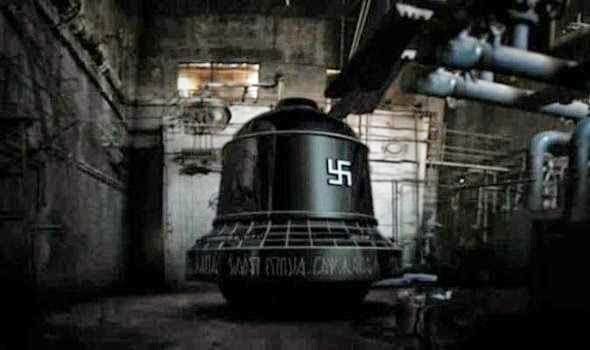
He also mentions red mercury which is Mercury [II] Iodide.
his would have caused the red or pinkish colour which the jelly had. Red Mercury scintillates under X-Rrays and is used as a super-conductor.
Paraffin works by creating a large cross section, or target and by slowing down fast particles.
Spin Polarisation:
Principle scientist in charge of the Projekt Thor, was Prof Walther Gerlach.
In 1922 he became famous as an understudy to Otto Stern, for their discovery of the deflection of atoms in a magnetic field, known as the Stern–Gerlach effect.
This was also the basis of Quantum Physics.
When Stern fled Jewish persecution Gerlach continued research at Goeth Institute, Frankfurt am Main.
In 1933 he experimented with the fluroescence of Mercury under the influence of magnetic fields.
Gerlach had also worked on transmutation of elements by photo chemistry.
The Bell may have combined spin polarisation with another effect, photo-chemistry pioneered in 1936 by Dr Ronald Richter.
Richter developed Carbide arc plasma furnaces for a chemical plant at Eger in Czechoslovakia.
When the plant switch to developing Lithium batteries for U-Boats Richter discovered he could induce radiation by injecting Deuterium into the Lithium plasma.
With photo-chemistry the concept creates a dense plasma contained by powerful electric magnets to cause fluorescence in Mercury.
Excited Mercury ions would then cause Beryllium to emit slow neutrons to be captured by Thorium 232, changing it into Uranium 233.
A variation of this method using Uranium 238 could also conceivably breed Plutonium for atomic weapons without the need for a nuclear reactor.
Project Thor began with Heeres Versuchanstalt No.10 - Wehrmacht Laboratory in January 1942. The project office was originally located at Torgau. From November 1943 the project office relocated to Neumakt west of Breslau [modern Wroclaw]. During the War Torgau was a penal centre where prisoners were employed in explosives manufacture.
Dr Ing Ernst Nagelstein visited a conference in Switzerland on 2 November 1944 where he disclosed to an OSS agent present that Auer was refining Thorium to metal. He added there was no known industrial use for Thorium. He also added that Otto Hahn was working on an A-bomb using either Uranium or Thorium. This Thorium project is associated with Project Thor.
Thorium was mined in Silesia near the Bell's location. Even larger stocks were available in France. Indeed when the Allies landed at Normandy in 1944, Germany urgently shipped tons of French Thorium by rail eastwards, deep into Germany. Why ship it so urgently and what made Thorium so important?
On 1 November 1943, Thor moved into its new home, a complex built beneath Gandau air base. Thor operated in partnership with private joint ventures by Fürstenau und Co. GmbH, AEG, Siemens and Bosch.
Thor also seems to have involved a powerful Tesla Coil, or Van der Graff generator built near Frankfurt am Main. Radiation from high voltage discharges were reported to have stopped engines of bomber aircraft flying overhead. This prompted a special Allied investigation called Project 1217 to investigate whether radiation discharges were a new form of weapon.
Prof Walther Gerlach who headed Thor for Heereswaffenamt was a dedicated scientist. In 1943 Gerlach received the Nobel prize for his work on spin polarisation of atoms. This itself was peculiar because his published work on the subject was in the 1920s and early 1930s. What prompted the awarding of recognition in 1943?
As an administrator, in emergency measures to progress the German A-bomb project, Gerlach was also charged with procuring fissile Uranium from January 1944. He was appointed in charge of the entire Uranium project by Heereswaffenamt, replacing Dr Abraham Essau.
Documents captured by ALSOS at Strassburg, often referred to as the Goudsmitt Papers which were classified after the War today reveal drawings of a tall standing device, looking like a Van der Graff generator, or perhaps a Tesla Coil. At the very top inside it's spherical head was a spinning device. In the margin are notes describing 5 million volts!
Nazi research papers captured at Strassburg concerning wartime nuclear projects were classified and archived in USA. One report has a diagram of a tall cylindrical device said in the plan to generate 5 Million Electron Volts [5MeV]. This device resembled a giant Van der Graff generator and had no obvious purpose for a conventional nuclear reactor. [2]
At the Kaiser Wilhelm Institute for Biophysics in 1940, biologist Boris Rajewsky raised concerns about increased experimentation with artificial radiation and called for a project to research the effects of radiation. A 3 million volt device was built for Rajewsky's research whose existence remains obscure.
When Gerlach took over from Esau in January 1944 he shunned KWI's extravagant and wasteful research projects. He focused exclusively on development of nuclear weapons.
At a meeting with Mentzell and Schumann in October 1944 they passed a motion not to turn over the still unfinished 3 million volt machine to Rajewsky because other previous high voltage "neutron generators" had been destroyed by Allied bombing. The new machine was vital for "the production of neutrons in physics and in the physics of explosives".
No information is available to identify what these earlier neutron generators were, or where their location was. [3]
After 22 July 1944, the SS took over all nuclear projects from Heereswaffenamt. Oversight of Thor was administered thereafter by Fuhrungsstab Kammler as one of his key responsibilities. Increasingly as the war neared it's end, Kammler assumed direct control of several projects including production and testing of jet aircraft. Farrell in his book defines Kammler's role as the production end.
The Bell was clearly part of a weapons project administered in part by the SS Armaments office, or Forschungen Entwicklungen, Patente [research development section patents] FEP headed by Admiral Rhein.
The armaments office was overall headed by SS Brigadeführer Heinrich Gärtner. The Bell project was led by SS Obergruppenfuhrer Emil Mazauw. SS Lt General Dr Hans Kammler is often associated with the Bell project however Kammler’s command appears connected more with armaments production whilst Mauzaw’s command was focused on research and development. It is possible however given his responsibility for nuclear weapons that he was connected with the weaponisation of material produced by the Bell. [4]
Almost exactly a year after it arrived at Breslau, as Soviet forces fought across Poland the Bell was shifted a short distance south into foothills of the Owl Mountains inside a complex of tunnels beneath Fürstenstein castle.
The complex had been built by organisation Todt under the supervision of Xavier Dorsch These tunnels included a 2 kilometre long subterranean rail connection with the main railway line through Lubiechow in the valley below. The tunnel was connected with the castle above by elevator in a 50 metre tall shaft.
Laboratories for developing electrical discharge systems for the Bell were at Neumarkt (modern Sroda Slaska) and Leubus [modern Lubiaz] disguised in the facility of Schlesische Wekstätten dr Fűrstenau, [Furstenstein Castle] with corporate involvement by AEG [AEG-Allgemeine Elektrizitaets-Gesellschaft, Annaberg in Erzgebirge] and Seimens [control mechanism].
Manufacture of the complex, contra-rotating centrifugal drum mechanism was performed by BMAG (Berlin Anhaltische Maschinenbau AG) located at Dessau, home of the sprawling Junkers aircraft factory complex. In this context, BMAG was also awarded a contract for industrial scale production of Dr Erich Bagge's Isotope Sluice centrifuges.
A sizeable underground facility existed at Schloss Fürstenstein (underneath Fürstenstein Castle) lower Silesia. Nearby and to the east The main Nazi Bell facility itself was located in the Wenceslas mine at Ludwigsdorf (modern Ludwikowize). First experiments with the Nazi Bell occurred in May and June 1944.
Bell's Scientific Purpose?
One theory, is that the Bell used a hitherto barely mentioned alternate method to acquire fissile Uranium for Atomic weaponry. Not Uranium 235, but rather Uranium 233.
A method which relies upon the spin polarisation of atoms in a plasma. It is an electrically induced state of matter in addition to those which we are normally used to, namely solids, liquids, or gas.
Charite Anlage
After 22 July 1944, the SS took over all nuclear projects from Heereswaffenamt. Thor was replaced by Charite Anlage along with a host of other codenames issued by SS Armaments office, Forschungen Entwicklungen, Patente [research development work patents] FEP headed by Admiral Rhein.
The armaments office was headed by SS Brigadeführer Heinrich Gärtner. The Bell project itself was headed by SS Obergruppenführer Emil Mazuw.
SS Lt General Dr Hans Kammler has often been mentioned in relation to the Bell project however Kammler’s command appears connected more with armaments production whilst Mazuw’s command was focused on research and development.
It is possible however given his responsibility for nuclear weapons that he was connected with the weaponisation of material produced by the Bell. [4]
Almost exactly a year after it arrived at Breslau, as Soviet forces fought across Poland the Bell was shifted a short distance south into foothills of the Owl Mountains inside a complex of tunnels beneath Fûrstenstein Castle.
The complex had been built by organisation Todt under the supervision of Xavier Dorsch These tunnels included a 2 kilometre long subterranean rail connection with the main railway line through Lubiechow in the valley below. The tunnel was connected with the castle above by elevator in a 50 metre tall shaft.
Laboratories for developing electrical discharge systems for the Bell were at Neumarkt [modern Sroda Slaska] and Leubus [modern Lubiaz] disguised in the facility of Schlesische Wekstätten der Fûrstenau with corporate involvement by AEG [AEG-Allgemeine Elektrizitaets-Gesellschaft, Annaberg in Erzgebirge] and Siemens [control mechanism].
Manufacture of the complex, contra-rotating centrifugal drum mechanism was performed by BMAG [Berlin Anhaltische Maschinenbau AG]located at Dessau, home of the sprawling Junkers aircraft factory complex.
In this context, BMAG was also awarded a contract for industrial scale production of Dr Erich Bagge's Isotope Sluice centrifuges.
A sizeable underground facility existed at Schloss Fürstenstein, lower Silesia. Nearby and to the east, the main Nazi Bell facility itself was located in the Wenceslas mine at Ludwigsdorf [modern Ludwikowize].
First experiments with the Nazi Bell occurred in May and June 1944.
Evidence of the Project's existence
At Farm Hall after the War whilst interned by the Allies, Prof Gerlach complained to collegues about difficulties assembling the engineers required for his photo-chemistry project:
"It is not true that we neglected the separation of isotopes. On the contrary, we discussed the whole thing at Tübingen in February and there was a meeting at Munich.
Clusius, Harteck and I said that this photo chemical thing must be done. It took until the end of the year before the people who could do it were got together and the spectrograph obtained and special accommodation acquired, as the Litz Institute had been smashed up". [5][6]
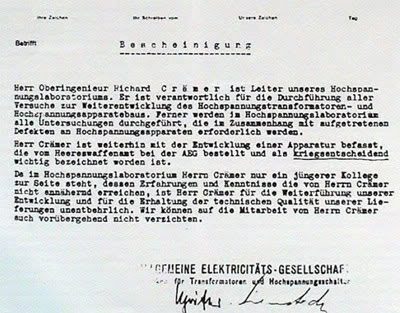
In fact project engineer, SS officer and ardent Nazi Dr Kurt Debus, denounced his collegue at AEG, Dr Richard Crämer to the Gestapo.
On Crämer's behalf another collegue, Dr Carl Ramsaur, intervened and wrote to the Gestapo about the importance of Crämer's work referring to the nature of their project as "Kriegsentscheidend" [War Decisive].
Anti Gravity Claims
Unfortunately the Nazi Bell attracts a lot of outlandish claims linking it to anti-gravity theories, or claims that it was a propulsion system for UFOs.
Some such claims may have been intended as disinformation by Sporrenberg to his interrogators.
Others may be founded on Dr Ronald Richter's work in Argentina during the early 1950s on plasma shockwave induced fusion and his claims in a letter seeking work in USA on plasma ramjet engines.
Richter claimed this engine could enable vertical take-off fighters, but with fuel consumption 20 times greater than that of a comparable jet engine.
Identities within the Bell Project
Of the other Nazi engineers or scientists claimed, or thought to be involved with the Nazi Bell, were Prof Kurt Debus, Dr Ronald Richter, Ing Otto Cerny, Dr Otto Ambros, Dr Elizabeth Adler and Ing Dr Richard Crämer.
Witkowski in his book noted from Polish Intelligence sources that the SS shot 66 scientists involved with the Bell to prevent their falling into Soviet hands. [7]
These however may have been captured Soviet and eastern European “guest workers".
There are two distinct bodies of scientists and engineers involved. Those who developed the device itself Like Richter, Crämer, Cerny and Debus, were more in the realm of high voltage electrical engineers. Ambros, Adler and Gerlach on the other hand were more likely concerned with the applications of the Bell device.
Dr Elizabeth Adler was a mathematician said to have been evacuated with the Bell and Debus on a Junkers Ju-390 flight in April 1945. [8][9]
Mathematics play an important role in calculating particle deflection in quantum physics. No record of Adler survives the war, however Gerlach's assistant before the war was a talented mathematician Miss Elisabeth Borman who had also worked for Max Born. It is known that their favourite hotel in Stockholm was the Adler Hotel.
Dr Otto Ambros was expert in Chemical warfare and chairman of Albert Speer's "S" Committee. The Bell served two different projects. One for nuclear physics and the other for biological warfare research, in particular studying the effects of radiation exposure on Concentration camp inmates, animals and plants.
Bell Engineers
Dr. Kurt Debus is best known for his role in managing V-2 launches for the SS and later working for NASA on Apollo moon launches. He also had expertise however in the measurement of high voltage discharges.
His official NASA biography says:
"Born in Frankfurt, Germany, in 1908, Dr. Debus received all his schooling in that country. He attended Darmstadt University where he earned his initial and advanced degrees in mechanical and electrical engineering.
"He served as a graduate assistant on the faculty for electrical engineering and high-voltage engineering while studying for his master’s degree. In 1939 he obtained his engineering doctorate with a thesis on surge voltages and was appointed assistant professor at the university. During this period he became actively engaged in the rocket research program at Peenemünde".
A common criticism of the Bell story is that the only reference to its existence is from Witkowski's claim of Sporrenberg's post war testimony, however Debus also described the Bell.
-- Document dated 22 April 1943 Foreign Scientist Case Files, K Debus NARA/RG 28, US Nat. Archive, College Park, Maryland USA.
Another reference to the Bell's existence comes from Polish scientist Prof Meiczyslaw Moldovia, a former prisoner of Gross Rosen Concentration camp who worked at the technical office in Fürstenstein Castle for Laternenträger.
After the War he revealed he had worked in the training of Nazi astronauts for a piloted version of the V-2 rocket. Such a rocket project did exist, called the A9/A10 Amerika Rakete intended for launch against New York.
His claim might be dismissed as the product of an overworked imagination, but in January 1945 Rocket scientist Wernher von Braun stated in a report to Berlin that problems with the piloted A9 were solved. From near Arnstadt the launch of such a rocket was observed on 16 March 1945, but remains unconfirmed.
In 2000, "Der Spiegel" surprised the world when it published an interview with an interview with Raul Streicher. Streicher claimed to be Nazi Germany’s third A9/A10 astronaut after Rudolf Schreder and Martin von Duhlen. Some of Streicher’s claims seemed unbelievable but "Der Spiegel" launched a special investigation studying classified archives of the Third Reich and could not disprove his story.
Raul Streicher, 85, from Germany made a sensational statement in "Der Spiegel" in 2000. The old man insisted that it was he who was in fact the number one spaceman, not Soviet Yuri Gagarin.
He added that he had been first in orbit in 1945. That sounded an absolute fable, and "Der Spiegel" launched a special investigation of the case and studied classified archives of the Third Reich. The investigation proved that the old man was not lying.
Before WWII, Germany set up a network of secret research institutes to develop and improve arms and methods of impact on humans. In 1938, a specialized rocket engineering research institute was founded near Wewelsburgh where the SS headquarters were located.
The Nazis pinned great hopes ion the A9/A10 cruise missile that could be used either as an inter-continentall or as a space rocket.
Test launching of the missile took place in 1943, but the invention turned out to be technically imperfect and sixteen out of the 18 launched missiles exploded at take-off or in the air.
Next year, the research institute produced about 40 improved missiles. At the same time, the Führer ordered to recruit military astronauts among German aces.
A new squadron consisting of from 100 to 500 pilots was formed in March 1944. Raul Streicher was also among them.
After several successful tests of the rockets in 1944 the final selection of astronauts was held. Hitler chose two candidates judging by their personal horoscopes as he was fond of astrology. Those were Martin von Dulen and Raul Streicher.
A rocket with von Dulen on board was first launched on 18 February 1945 and was a bad luck as the rocket exploded in about three minutes after the start. In six days another rocket with Raul Streicher on board was successfully launched; then it orbited the Earth and landed on water in Japan.
So, Streicher says that his flight on 24 February 1945 was the beginning of space exploration by humans.
It has to be noted however that some of Streicher's assertions about his own flight defy even the performance projections made for an A9/A10 rocket by its developers, such that Stricher's claims about his own personal rocket flight should not be trusted.
Corroboration however comes from unexpected sources. In his book "Leap of Faith" [pub 2000] US "Gemini" astronaut Gordon Cooper stated that in April 1945 at Peenemünde the Germans had "a manned V-2" ready to fly. Cooper claimed his information came from "Jack Keutner" alias Dr Joachim Küttner, a former Peenemünde scientist working for NASA.
Laternenträger was also linked with the work of Dr. Erich Regener, who meticulously researched the effects of radiation from 1914.
In 1942 Regener became involved with the V-2 project developing a pressurised re-entry capsule with parachutes for a soft landing. This was called the Regener Tonne.
Had the V-2 been used for nuclear warheads, or nerve gas, then Regener’s capsule would likely have been a pre-requisite. Interest in Regener’s work inexplicably halted in mid-1944.
Josef Koch was an engineer sent to work at Flottmannwerke, Breslau in May 1944.
The plant consisted thirteen buildings and 2000 staff, with it’s own site Police force. Flottmanwerke made tank tracks, but it’s highest priority work was manufacturing “internal parts for V weapons.” Koch told how prior to May 1944 V-1s had been assembled there as well as V-2s.
Inside the director’s office were diagrams and officials there spoke of the V-3. Koch said the V-3 was 33.1 metres long and 3.2 metres diameter. He spoke of eight sections containing nitro glycerine and compressed air.
It appears according to Koch therefore that at least up until May 1944, Laternenträger was involved in preparing prototypes of V-1 and V-2 rockets with nerve gas warheads.
Dr Otto Cerny revealed his role in the Nazi Bell in the early 1960s whilst working for NASA to Greg Rowe’s father.
Greg recalled listening to the conversation as a child and recounted it for Henry Stevens. Cerny described it as something like a ring of stones with a hoop inside which sat the Bell. Cerny also mentioned a concave mirror above the axis through which one could see backwards. [10]
The JIOA list of scientists most of whom were recruited for Operation Paperclip to work for USA. The list refers to Cerny as “Elec. Instal. on Supersonics” and that he had been attached to the technical University of Vienna. The Vienna technical university was involved with an underground SS nuclear facility at Melk and a nuclear research laboratory at Zell am See.
Crämer was a transformer engineer from Oberschönweide, who with the AEG Research Institute was developing the Hochspannungsprojekt [High Voltages Project] under contract to Heereswaffenamt [HWA].
This project was reborn under the SS in July 1944, codenamed Charite Anlage with the priority code reference SS/1040.
When Crämer was denounced to the Gestapo by Gerlach, AEG Resarch institute’s Prof Dr. Carl Ramsaur defended Crämer’s importance to the war effort and the highest priority work of Prof Dr E. Schumann, to secure Crämer’s release. Ramsaur’s letter links the Bell with German atomic bomb research.
Clues to Bell’s Purpose
Dr Eric Schumann of course was working on designs in 1943 with Dr Walter Trinks for hollow, shaped charge tactical atomic weapons using Uranium 233 as their fissile mass.
The question of course arises where would Schumann obtain extremely rare and hard to separate Uranium 233?
The answer is the Bell produced Uranium 233 for Schumann.
Rainer Karlsh’s book, "Hitler’s Bombe" relates that a team of physicists from Leibig University at Giessen carried out a lot of research at Ludwikowize, which is where the Nazi Bell was located. Sporrenberg commented on various animals and personnel dying horrible deaths after exposure to the Bell. He said their flesh would liquify.
Giessen is north of Frankfurt am Main and its research appears focused on genetics and biological research. Was this ghastly research to discover what radiation could do to Germany's enemies?
Bell as a Uranium/Plutonium Breeder?
Otto Hahn experimented before the war with Lise Meitner on photo-fission techniques to determine the properties of slow neutrons and transmutation of elements. Because Hahn was not particularly gifted, or insightful, he relied heavily upon Meitner who as a Jewish scientist fled to Stockholm
in 1938. Hahn used the excellent air mail service between Berlin and Stockholm throughout the war to seek Meitner’s advice and unwittingly was the prime security breach for Nazi Germany’s entire nuclear effort. Everything Hahn knew was relayed to MI5 through Operation Epsilon. [11]
Dr Ing Ernst Nagelstein contacted the OSS in Switzerland on 2 November 1944 and disclosed that the Auer Company was refining Thorium to metal and he claimed there was no known use in Germany for Thorium.
In pre-war days Thorium had been used in toothpaste, but this use had ceased during the war. Apart from large captured stocks of Thorium in France, which were suddenly removed to Germany in 1944 after the Normandy landings, Thorium was also mined in the Erzbirge, right next to the Wenceslas mine, home to the Bell project.
Nagelstein added that Otto Hahn was working on the Atomic bomb using either Thorium, or Uranium.
Other scientists known to have been involved included Dr Herman Oberth who in late September 1944 journeyed with Dr Herbert Jensen [nuclear physicist], Dr Edward Tholen and Dr Elizabeth Adler from Prague to Breslau.
The Nazi Bell was located a short distance southwest of Breslau. [12] Oberth’s wartime expertise lay in developing special explosives. Schumann relied upon special high speed explosives for his shaped hollow charge mini nukes.
The importance of Schumann being linked with the Bell project is that he and Trinks had made a patent application for a hollow charge A-Bomb which specified use of U233 as it’s fissile core.
Thorium 232, if bombarded by Protons with less than 14MeV energy, may be transmuted to Uranium 233 without the risk of dangerous contamination by Uranium 232. This process is called Photo Fission, or Recoil Based Fuel Breeding. This method can also breed Plutonium 239 from Uranium 238.
Notes:
[1]Witkowski, Igor. "The Truth About the Wunderwaffe".
[2] NA Gerlach's Report dated 2 May 1945, RG 302, ref 244
[3] Deichmann, Ute & Dunlap, Thomas. "Biologists Under Hitler"
[4]Farrell, Joseph. "The SS Brotherhood of the Bell: The Nazis' Incredible Secret Technology".
[5]Bernstein, Jeremy. "Hitler's Uranium Club, The Secret recordings at Farm Hall
[6]Litz Institiute, likeliest location Dessau aircraft manufacturing complex. Litz wire is a multi-braided wire for conducting very high voltage charges.
[7] Witkowski, Igor. "The Truth About the Wunderwaffe". Witkowski believing these to be German scientists is perhaps unaware the degree to which captured Soviet scientists were recruited for work on SS projects and the probability that scientists who were shot were likely to be Russian scientists.
[8][9] Bell evacuation flight noted in Farrell, Joseph. "Giza Death Star Deployed", based upon report of SS Hauptsturmführer Rudolf Schuster's interrogation, Berlin Document Centre.
[10] Stevens, Henry (2007) Adventures Unlimited Press. "Hitler's Suppressed and Still Secret Weapons, Science and Technology".
[11] Bodanis, David. " E=MC2"
[12] Witkowski, Igor. "The Truth About the Wunderwaffe".
Flight of the Nazi Bell
The conventional view of the Junkers Ju-390 story is that only one prototype was ever built, being the Ju-390 V1. This version asserts that the Ju390 V1 was first flown from a dirt airstrip at Merseberg on 20 October 1943, piloted by civilian Flugkapitän Hans Joachim Pancherz and engineer Dipl-Ing Gast.
However there is also an earlier claim that the Ju-390 made its first flight in August 1943 at the hands of famous Reichlin Test pilot Flugkapitan Hans Werner Lerche at Bernberg.
The conventional view therefore is that the Ju-390V1 was retired from service and flown to Dessau in November 1944 where it was stripped of propellers and sat derelict until destroyed. There are conflicting claims of it's destruction by a US 8th Air Force raid on 16 January 1945 and other claims that it was burned in April 1945 to prevent capture.
Either way it is generally accepted the Ju-390 V1 ended its career at Dessau in November 1944 and remained derelict until destroyed in 1945.
Somewhat inconveniently for those who deny the existence of a second aircraft, accounts and sightings of Ju 390s in 1945 continued and even photos of a second aircraft in flight emerged.
In October 1943 Major Hoffmann recommended that Ju-390 production should commence immediately and there was no need for further prototype aircraft.
Hoffmann urged proceeding straight to series production. Air Marshall Erhard Milch adopted Hoffmann's recommendation. The first prototype had been flying since August 1943.
This aircraft displayed some longitudinal instability. The second aircraft had a much longer fuselage with a greater tail movement arm. The Ju-390 V2, fitted with BMW801E engines was redesignated as the production standard Ju-390 A1. Junkers company records suggest that the Ju-390A1 transporter was built and did fly.
The unconventional explanation for the fate of Junkers second Ju-390 concerns an alleged flight from an airfield at Schweidnitz in Poland to evacuate a Bell shaped ionising centrifuge used by the Nazis for advanced research of high energy fields, to Argentina, challenging historians who argue there was only ever one Ju 390 flying.
Thes Bell device has become the subject of various claims, attracting cynicism from some and fantastic claims from others.
It is sufficient however to describe it for what it was. Simply a centrifuge which spun Mercury until it fluoresced into a plasma. The plasma interacted with a variety of compounds placed in a porcelain container at the core of the centrifuge to create some very high voltage radiation. It's purpose continues to spark debates. The Bell project was known by the Nazi codenames Cronos/Laternenträger.
In the book "Wunderwaffe", by Igor Witkowski, it is stated that there are Polish depositions extant in WW2 War Crimes - proceedings against SS Lieutnant General [Gruppenführer] Jakob Sporrenberg, Police Chief [ie Gestapo] Lublin [occupied Poland], which indicate that "Cronos/Laternenträger" was a project in plasma physics.
Sporrenberg was captured in Norway, held by the British in 1946 and then returned to Poland to stand trial. He was hung in December 1952.
Before his execution he was interviewed at length and these interview reports were not declassified until 1998. Kammler oversaw this project. He was frequently at Gross-Rosen concentration camp which supplied labour for an immense underground construction in the Eulengebirge Mountains
Kammler oversaw removal and evacuation of the Bell project.
He was frequently at Gross-Rosen concentration camp which supplied labour for an immense underground construction in the Eulengebirge Mountains and was linked by a long subterranean tunnel to the underground galleries at Waldenburg [modern Walbrzych] where "Cronos/Laternenträger" experiments took place.
There is said to be a vast complex of tunnels over 35 square kilometres of territory. Today several tunnels are privately owned and open for tourists. Others are flooded and impossible to access.
The existence of this complex is confirmed in a document dated Warsaw 6 May 1947 "Action for De-Arming Oder Line" which speaks of the removal of huge quantities of machinery from the interior of the location before it was destroyed by explosives.
In April 1945 the Nazi Government in Berlin was preparing to evacuate key personnel and records from the capital. A vast armada of transport aircraft was required for this task.
The last communication from Kammler is a cable timed at 1100 on 17 April 1945 addressed to SS-Führungshauptamt/Org. Abt. ROEM1, Kammler responding to Berlin's request for use of transport aircraft under his command, which reads:
"Betr: LKW Junkers
Gemäss Führerbefehl gehen Massnahmen Strahlflugzeug Militärischen voraus. Bin deshalb nicht in der Lage gewesen, gewünschten LKW freizustellen. Bau-Insp. der Waffen-SS Reich Süd, Gez. Kammler
Translated:
"Re: Lorry Junkers
In accordance with Führer-Order jet aircraft measures take precedence over military. Have therefore not been in the position to release the lorry you require. Bau-Insp etc, signed Kammler."
Lorry was simply code for the Junkers aircraft. This gives us an approximate date for the Bell's evacuation. About 17 April 1945.
An extraordinary aspect of this was that Kammler was turning down a request for the Ju-390 from Hitler's headquarters in April 1945. Why was Hitler's headquarters requesting the Ju-390 ?
The answer to that question is in a book called "The Berlin Bunker" by James P O'Donnell, published 1979, compiled by interviewing 250 survivors from Hitler's Bunker in the last days of the Reich. O'Donnell cites Reichs Minister Albert Speer talking about Hitler's pilot Hans Baur. Baur it seems was obsessed in the last days with using the Ju-390 to fly Hitler to Japan..
Speer said Baur had serious plans to fly Hitler out on 23, 28 and 29 April 1945. Speer quoted Baur saying to him after the war, "right up to the last days I could have flown the Führer anywhere in the world".
Baur however was denied use of the Ju-390 for Hitler by Kammler. The world learned in 2004 from then 93 year old Hauptmann Ernst König that on 1 May 1945 he received orders from Baur to prepare a six engined BV222 flying boat to fly VIP passengers from Norway to Greenland.
Rudolf Schuster's testimony
As the story is told, In April 1945 as Soviet forces closed on Schweidiznz [modern Swidnica]. the Bell was loaded on a Junkers Ju-390 aircraft.
In his book, "Wunderwaffe", Witkowski says the Ju-390 flew from Prague to Opole, Poland.
Another witness SS Hauptsturmführer Rudolf Schuster of the SS Economic Ministry [WHVA] who witnessed the Bell device being loaded into a Ju 390 for an evacuation from Germany at an airfield at Schweidnitz 100km west of Opole in an area still held by the 17th Army.
The 1st Panzer Army still held territory east, near Opole and the 4th Panzer Army still held territory west of Schweidnitz.
Other sources suggest the airfield may have been Bystzyca Klodzka airfield situated in a valley within the Eulenbirge mountains themseleves and indeed west of Opole. Bystzyca Klodzka was connected by narrow gauge railway with the Wenceslas mine at Ludwikowice.
Schuster noted the Ju-390 aircraft was hidden under tarpaulins at the airfield, but beneath those tarpaulins it was painted in pale blue with markings of the Swedish Air Force.
Sporrenberg testified that it departed with passengers engineer SS Mjr. Kurt Debus, mathematician Elizabeth Adler and scientist Dr Hermann Oberth, for Bodo in Norway.
Elisabeth Adler has proven impossible to identify with certainty, but she appears to have been Prof Walther Gerlach's previous laboratory assistant Elisabeth Borman. She was a mathematician in her own right.
Schuster was with the special economic department of the SS. His testimony survives to us at the Berlin Document Centre. Critics say there is no record of Schuster's name in the SS, but the same can be said of many Luftwaffe personnel after the Nazis deliberately destroyed personnel files at Linz in April 1945.
Nuclear scientist Professor Walther Gerlach had been involved with the Nazi Bell device. Gerlach was the only Nazi scientist handed over to the Americans by the British. His wartime diary remains classified top secret by the CIA.
Testimony from Dr Wilhelm Voss
In 1974 British Journalist Tom Agoston interviewed Kammler's boss in charge of the SS Skoda works, Dr Wilhelm Voss. His guest Voss, unaware of the testimony from either Schuster, or Sporrenberg told Agoston about the Ju-390 flight from Schweidnitz to Bodo and the Bell. Voss was in hiding at Agoston's lodgings seeking to avoid indictment at Nuremberg.
Arriving Bodo Norway
Sporrenberg claims the Ju-390 was kept under SS guard at Bodo under tarpaulins painted in pale colours of the Swedish Air Force. Bodo was a small fishing town of 5000 Norwegians. The airfield nearby had been hastily built by the British in 1940 as a base for Hurricanes and Gladiator fighters.
The Luftwaffe took over Bodo airfield basing a collection of Me-109, Ju-87 Stukas and a handful of Ju-88/Ju-188 there. Bodo's 1200 metre runway was formed by planking over a marsh area. It would have had a relatively weak flexible runway. Fortuitously the Ju-290 was capable of landing on runways with Pavement Construction Numbers [PCN] of just 7.5.
The Ju-390 was also capable of landing in just 510 metres of runway. It had an exceptionally slow stall speed of just 66 knots.
From Bodo to Argentina

At this point German sources fall silent, but according to several 1945 claims, a six engined, or multi engined German transport plane arrived at a private aerodrome at Puntas de Gualeguay in Argentina 195 km north of Buenos Aires where it unloaded a Bell device and some passengers.
Long after World War 2, the secretive Argentine Government was compelled at congressional hearings to declassify some of it's wartime dealings with Nazi Germany.
Out of this tumbled the fact that a large multi engined German aircraft flew to El Palomar airbase Buenos Aires on 2 May 1945 from Villa Cisneros [now known as Daklha] and unloaded a device simply called the Bell.
It was then flown from El Palomar to a jungle airstrip in Entre Rios province Argentina in May 1945 and then to a German owned ranch in Uruguay near Paysandu.
To cover the embarrassment of the aircraft's existence in Argentina as the Third Reich collapsed, it was broken up with parts dumped into the Rio Pirana.
-- Classified Intelligence report of Argentine Economic Ministry 1945 only declassified 1993
The report itself was not published.
Prior to declassification of Polish archives in 1998 there was no public knowledge of the Nazi Bell device, thus the Argentine report was an entirely independent corroboration of Sporrenberg, Schuster and Voss.
Many years later, Abel Basti's 2004 tourist guide to "Bariloche Nazi", disclosed the report's claims about the Bell arriving in 1945.
Basti probably obtained this document by giving numerous undertakings to the Argentine authorities.
This is not an abnormal procedure in this country.
The Argentine Government does not wish to have sensitive matters involving its Nazi past given official airing, but occasionally Argentine authors are allowed to see documents unofficially.
Undertakings usually include promising not to publish any photocopy, not to show the copy to anybody else, not to quote the issuing office, and to change important sensitive details.
In this particular document it is not clear whether the aircraft landed in Uruguay, or Argentina because the location is deliberately obscured and confused.
Witkowski revealed a report, only declassified in 1998, by the son of a Polish diplomat who witnessed a Junker 390 being dismantled in May 1945 at an airfield on a German ranch along a road east from Paysandu city towards Rivera, near the village of "19 de Abril" in Paysandu Province, Uruguay.
Local folklore has it that parts of the aircraft were cut up and dumped in the Rio Uruguay.
The aircraft's arrival is also quoted in Abel Basti's 2004 tourist guide to "Barriloche Nazi."
Three independent sources corroborated each other about a Ju-390 flight from Silesia to Bodo. Two further reports independently corroborate the arrival of this aircraft in Argentina and/or Uruguay in May 1945. All five cross corroborate each other that the Ju-390 evacuated a Bell device from the war in Europe.
When Argentina created it's own nuclear program in 1947 at remote Lake Nahuel Huapei, close to the Nazi populated town of Barriloche, it was the same device offloaded from the Ju 390 at El Palomar which was set up in Dr Ronald Richter's laboratory.
Information that the Bell was a particle accelerator comes in part from the 1956 job application by Dr Ronald Richter to work for the US Air Force.
A job application which apparently was so sensitive that it too remained classified until 1999.
During WWII the Germans developed or planned a number of Wunderwaffen, or miracle weapons which, Hitler assured his people, would reverse the Reich’s fortunes and lead to victory.
The Germans tried to develop a nuclear fission bomb, but, we are told, were stymied by Allied sabotage of their heavy water plant…they needed the heavy water [Deuterium Oxide] for a nuclear reactor.
They developed Schnorchels for submarines; they built the world’s first truly successful jet fighter, the Me-262; they developed a rocket fighter; they designed the first jet bomber; they experimented with a flying wing aircraft [but there is no evidence that they overcame its control and stability problems] and, of course, they designed and built the powerful V-2 rocket, the first rocket capable of reaching outer space.
Some, like the V2 rockets and the first jet fighters, saw action but came too late to halt defeat. Others were so outrageously ambitious that they never got past the drawing board.
The idea of building flying saucers to bomb London and even New York could have been just such a scheme. And now it is claimed that Hitler’s scientists had indeed designed this type of aircraft – and were so far advanced with the project that a proto-type may even have flown.
The programme, under the command of SS officer Hans Kammler, was said to have made significant break-throughs with their experiments, says a report in the German science magazine "PM".
There have also been persistent rumors that the Germans, and possibly their Japanese allies as well, developed nuclear weapons despite the lack of heavy water, having discovered a way to enrich Uranium to bomb grade level (about ninety percent U-235 isotope).
There is the curious case of the U-234 submarine, which was surrendered to the Americans on 19 May 1945, with a mysterious cargo in lead containers.
Did the U-234 carry U-235? Or was it merely natural Uranium? Two Japanese officers had been on board but supposedly committed suicide when the crew decided to surrender to the Americans. Apparently the submarine was carrying Uranium, whether natural or enriched, to Japan, but changed course.
If the cargo was only natural Uranium, why did US officials classify everything? On the other hand, if the Nazis had developed nuclear weapons, why would they not have used them?
Author and researcher Joseph P. Farrell has speculated that Martin Bormann bribed the Americans with the Uranium so as to escape being charged with war crimes.
Other accounts suggest that Bormann died while trying to escape Berlin during the final battle, or that he went to the Soviet Union and, perhaps, had been a Soviet agent all along.
There are also the rumors that Hitler flew out of Berlin and took a U Boat to Argentina or even to a secret Nazi base in Antarctica. It is a fact that the Nazis were somewhat obsessed with Antarctica, and that many top Nazis did find asylum in Juan Peron’s Argentina.
But of all the legends about the Nazis, none is more fascinating than the claims that they succeeded in developing gravity control, and, perhaps, "free" or "virtual" energy. Where did the Nazis gain the knowledge needed to do the seemingly impossible?
A book released over fifty years after the Second World War was over, put forward a different theory as to why.
Polish author Igor Witkowski, in his 2000 book "The Truth About The Wonder Weapon" [Prawda o Wunderwaffe, claimed he had read and translated transcripts from Nazi SS officer, Jakob Sporrenberg.
He said that he had access to these files through an unnamed source from the Polish Intelligence community, and that while he was allowed to see them and translate them, he was not allowed to make copies of them.
He described a supposed gravity control craft built by Nazi scientists, called "die Glocke," or "the bell," due to its shape.
The design incorporated rotating cylinders and mercury, reminiscent of the legendary Hindu "Vimanas".
Mercury was also important for Medieval alchemists, and there have been persistent rumors that a mercury compound called “red mercury,” or mercury antimony oxide Hg2Sb2O7] can cause a nuclear explosion.
Witkowski stated that the dimensions for Die Glocke were impressive to say the least, standing at between 12 to 15 feet high, measuring 9 feet across and was made of a very "hard and heavy" metal. It was shaped very much like a bell, hence the name, and there were said to be strange ancient-type hieroglyphics around the base of it. Hard proof of this is lacking.
Supposedly the Bell was tested at a structure called the “Henge” near Ludwikowice, Poland, near the Czech border.
Again, proof is lacking, but the structure undeniably exists. Skeptics claim that it is merely the support for a water tower, but, unless it is on a hill [videos show no evidence of this] it is far too low for an effective water tower.
This entire story has been taken up and developed further by Joseph P. Farrell, a formidable researcher with a considerable knowledge of science and technology.
But, if there is any truth to any of this, where did the Nazis gain the knowledge needed to do the seemingly impossible?
German physicist Walter Gerlach made a study of gravity, and he had once suggested that mercury might be transformed into gold by relatively simple means…clearly, he thought outside the box.
Farrell and others have suggested that he may have played a major part in Nazi gravity control research, and that the overall project was headed by SS Obergruppenführer Hans Kammler, who disappeared at the end of the war.
Then there is the case of Austrian researcher Viktor Schauberger, who was fascinated by the esoteric qualities of water and obsessed with implosions and centripetal flows.
As has been the case with Nikola Tesla, Schauberger has achieved an almost legendary status, and there are rumors that he developed a round turbine engine called a “Repulsine” that could control gravity, creating a vortex and rising straight upwards.
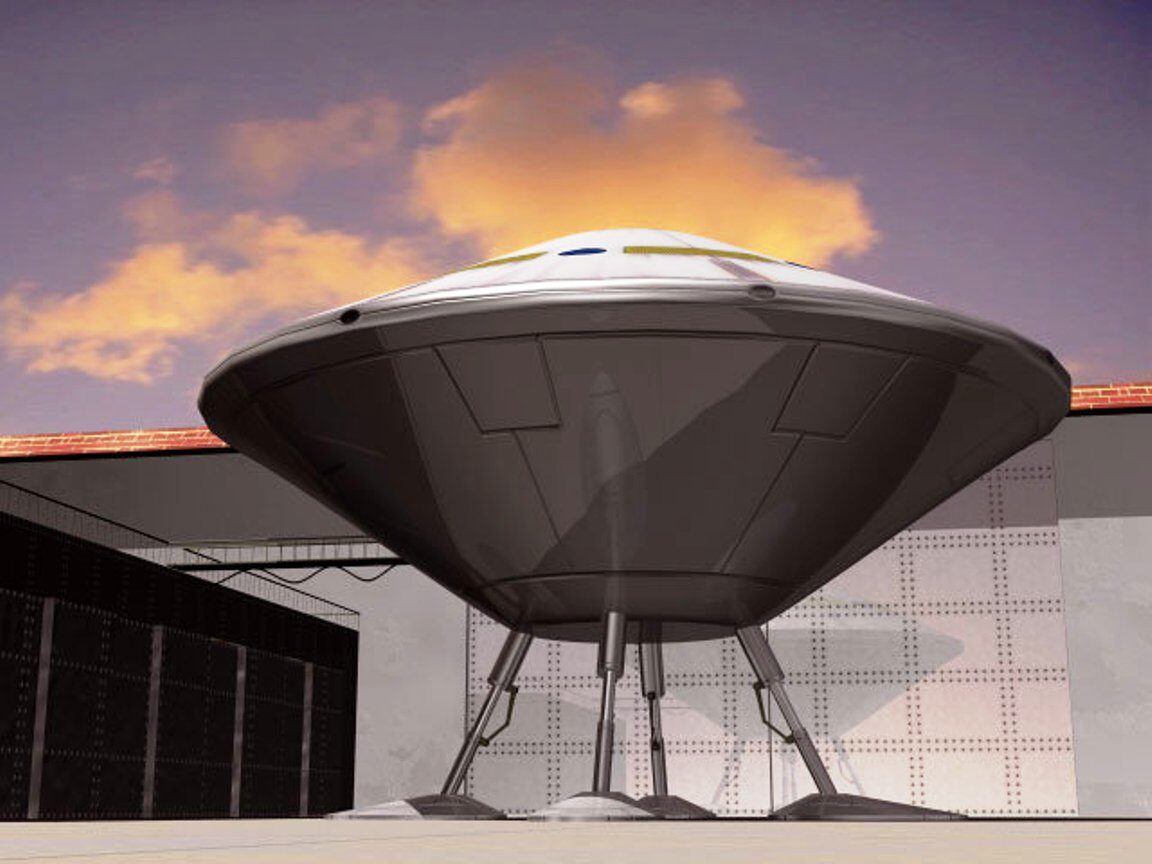
Artistic concept of the V7
The SS captured Schauberger and made him try to turn the engine into a vertical takeoff aircraft – which looked exactly like a flying saucer.
The prototype crashed – but the research was said to be continued by a shadowy V2 rocket engineer called Dr Richard Miethe.
Miethe – whose existence has never been conclusively proved – was said to have worked on several "Flugscheiben" – or "flight disc" – designs during the early 1940s.
The most notorious of these designs was the fabled V7 – which supposedly harnessed high-intensity electrical charges to use atmospheric oxygen to oxidize atmospheric nitrogen for an an endless fuel supply.
No photographs of the V7 survive, but after the war, German engineer Bruno Schwenteit patented a flying saucer design he claimed was actually constructed during the war.
The Soviets are said to have seized the V7 prototype when they marched into the Breslau air base in western Germany – now Wrocław, Poland.
In 1952, Miethe reportedly told the French daily newspaper "France-Soir": "If flying saucers exist, it is the V7 which I built in 1944, the engines of which the Russians seized at Breslau".
Once again, hard proof is lacking.
There is yet another possibility.
The Nazi Party was created, and Hitler sent to become its leader, by a mysterious and rather sinister cult called the Thule Society, named for a legendary northern version of Atlantis, supposedly the original home of the Aryan race.
The Thule Society was essentially an earlier cult, the German Order, under a new name, and the German Order was essentially a rebirth of a still earlier cult, the Order of the New Templars.
There were also known connections with the Vril Society, and many prominent figures in the Nazi party had known interests in the Occult and the so called dark arts.
Anyone who has studied these cults, and the Theosophists, and the earlier Masons and Rosicrucians, and the still earlier Knights Templar, will notice that the same signs and symbols and beliefs appear over and over.
It is quite likely that these cults, or at least their beliefs and goals, are descended from the ancient mystery cults, and/or a branch of the ancient Egyptian priesthood.
Evidence has emerged in recent years confirming a belief that early Man was much more advanced than previously believed, and civilizations existed long before historical Egypt and Sumer.
Plato said that the buildings of Atlantis were made of red, black, and white stones…and these are the colors of the Nazi flag. It is entirely possible that the technology of gravity control has been passed down by secret societies and originated in prehistoric times.
Possibly through the Vril Society's influence, which very much believed in UFOs and ancient technology, they Nazis seemed to have a keen interest in ancient items and writings, in particular ancient Indian Sanskrit.
An ancient Hindu manuscript, "Samarangana Sutradhara" [translated as "Battlefield Commander"], describes a very similar machine to the Bell:
"Strong and durable must the body of the Vimana be made, like a great flying bird of light material. Inside one must put the mercury engine with its iron heating apparatus underneath.
"By means of the power latent in the mercury which sets the driving whirlwind in motion, a man sitting inside may travel a great distance in the sky. The movements of the Vimana are such that it can vertically ascend, vertically descend, move slanting forwards and backwards".
According to another ancient Hindu text the "Mahabharata" one Vimana variety was shaped like a sphere and borne along at great speed on a mighty wind generated by mercury.
That the Vimana described in antiquity were a viable mode of flight is indisputable.
That they once existed -very likely- that they have been duplicated in the modern era - disputable.
If the Nazis had developed this technology, it must have been at the very end of the war, or they would have produced these crafts in large numbers and used them as weapons against the Allies.
Farrell and others have suggested that two of America’s most famous UFO incidents may have been caused by crashes, not of Alien craft, but of the Nazi Bell, whether controlled by a secret group of Nazis or by our own government, or by the Soviets.
The first of these is the Roswell crash.
To those who claim that the incident can be explained by the crash of a Project Mogul balloon, it can be be pointed out that a balloon is a balloon is a balloon.
Neoprene is synthetic rubber, and metal foil and balsa wood were very familiar materials in 1947.
There is no way on Earth that Major Jesse Marcel, the Intelligence officer involved, would not have recognized a balloon, whatever its purpose.
Had he reported a balloon as a crashed "flying disk" his career would have ended that day…but he was later promoted.
His commander, Colonel William Blanchard, authorized a press release stating that it was a "flying disk," yet he was promoted all the way to four stars.
And if the wreckage was that of a mere balloon, why was no writing in English found, why no "made in USA" or "property of US governmen,". or directions telling anyone who found it to call the nearest Army base?
And the Mogul balloons were really trains of balloons held together by long cords. Why was no cord reported?
Clearly something crashed at Roswell, and clearly it was not a balloon of any kind, and clearly it was of interest to the Army Air Force.
The possibility that it was interplanetary cannot be ruled out, but neither can the possibility that it was man made, whether developed by researchers working in the US, or by the Soviets, or by some secret group of Nazis operating independently.
Perhaps the most likely explanation [but not necessarily the correct one] is that the object at Roswell was designed by Nazi scientists working for the US under the auspices of Operation Paperclip.
Aspects of the crash might be explained by the Nazi obsession with magic and occult lore, an obsession matched by the Freemasons in the US government.
The "hieroglyphics" reportedly seen on the fragments found at Roswell might well be Germanic runes of the kind found around the "Black Sun" symbol at Wewelsburg Castle.
Many have speculated what became of "Die Glocke" after the Nazis fell, but perhaps Farrell’s contention is the most plausible.
He contends that the device in fact resurfaced, some 20 years after WWII, crashing into the woods of Kecksburg, Pennsylvania on 9 December 1965.
Dozens of people across the northeastern US and eastern Canada saw a fireball streak across the sky, and many reported that it made major direction changes…something virtually impossible for a meteor.
Many heard sonic booms, and there were even claims of fragments of hot metal falling from it.
The object was described by several volunteer firemen and others as "Acorn shaped" [similar to descriptions of the Bell], made of metal, and about as large as a Volkswagen Beetle.
Several people reported "hieroglyphics" around the base of the object.
Witnesses further reported that intense military presence, most notably the United States Army, secured the area, ordered civilians out, and then removed an object on a flatbed truck.
The military claimed they searched the woods and found "absolutely nothing".
The "Tribune-Review" from nearby Greensburg which had a reporter at the scene ran an article the next morning,
"Unidentified Flying Object Falls near Kecksburg—Army Ropes off Area."
The article continued:
"The area where the object landed was immediately sealed off on the order of U.S. Army and State Police officials, reportedly in anticipation of a 'close inspection' of whatever may have fallen ...
"State Police officials there ordered the area roped off to await the expected arrival of both U.S. Army engineers and possibly, civilian scientists".
However, a later edition of the newspaper stated that nothing had been found after authorities searched the area.
Local radio reporter John Murphy allegedly photographed the object, and, according to his wife, Bonnie Milslagle, some military personnel confiscated the film.
Several radio station employees verified that they saw the photos, and that people claiming to be government agents confiscated the radio program tapes.
In February of 1969, while on vacation in Ventura, California, Murphy was killed by a hit and run driver.
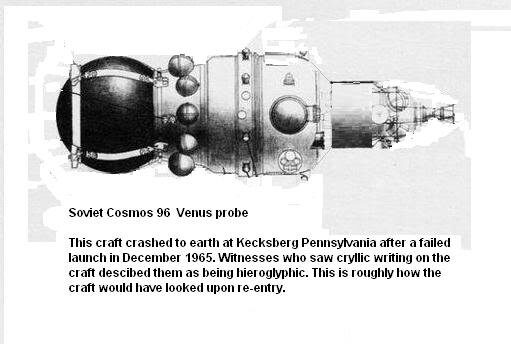
There had been speculation by NASA's James Oberg, that the object in the Kecksburg Incident may have been debris from Kosmos 96, a Soviet satellite, a space probe intended for Venus which failed and never left the Earth's atmosphere.
Kosmos 96 had a bell- or acorn-like shape similar to the object reported by eyewitnesses [though much smaller than witnesses reported].
However, in a 1991 report, US Space Command concluded that Kosmos 96 crashed in Canada at 3:18 a.m. on 9 December 1965.
This was about 13 hours before the fireball thought to be the Kecksburg object undergoing re-entry was recorded at 4:45 p.m.
In December 2005, just before the 40th anniversary of the Kecksburg crash, NASA released a statement to the effect that they had examined metallic fragments from the object and now claimed it was from a re-entering "Russian satellite".
The spokesman further claimed that the related records had been misplaced.
According to an "Associated Press" story:
"The object appeared to be a Russian satellite that re-entered the atmosphere and broke up.
"NASA experts studied fragments from the object, but records of what they found were lost in the 1990s".
The claim contradicts what Nicholas L. Johnson, NASA's chief scientist for orbital debris, in 2003 stated - that orbital mechanics made it absolutely impossible for any part of the Kosmos 96 Venus probe to have accounted for either the fireball or any object at Kecksburg.
Johnson also added there were no other known man-made satellites or other objects that re-entered the atmosphere on that day.
Debunkers have pointed out that other Kecksburg residents, who did not witness the object at close hand, are skeptical of their fellow citizens’ stories, …
But it is almost inconceivable that all the witnesses are lying [and telling pretty much the same story].
In 2005, NASA revealed that the object was a downed Soviet satellite, contrary to their earlier claims, according to "Today in History".
NASA also claimed that all records of the incident were misplaced sometime in the 1990s.
The description of "Die Glocke" and the eye witness accounts of what crashed in the woods of Kecksburg, Pennsylvania in 1965 suggests that quite possibly key pieces of history are being kept from us.
Again, as is so often the case, final proof is lacking.
But the evidence overall suggests that our government has long had access to exotic propulsion systems and energy sources.
Richard Miethe, Saucer Designer - Did he exist?
Richard Miethe was said to be lead designer of the engines for a German turbojet-powered flying saucer.
Skeptics says he did not exist, there being no confirmation of his existence aside from with Rudolf Lusar's book, "German Secret Weapons of the Second World War", and a 1952 interview in "France-Soir".
However that interview, when read in its entirety, is convincing and has several obscure details of his postwar service in Egypt that are verified by other sources.
France-Soir, Saturday 7 June 1952:
German Engineer Richard Miethe Affirms to France-Soir: "If flying saucers exist, it is the V7 which I built in 1944, the engines of which the Russians seized at Breslau "
TEL-AVIV, June [Special to "France-Soir"] A group of German experts on "V-weapons", who were working for the Egyptian government in the manufacture of radio-controlled missiles, were very recently expelled by the authorities of Cairo.
These specialists of the Physikalische Arbeitsgemeinschaft [PAG], headed by Dr. Kurt Füllner and Mr. Herman Plitzken, had refused to deliver, after the completion of their work, their secret plans to Egypt.
After several unfruitful attempts, the authorities confiscated all the goods and the personal effects of the German scientists and refused to pay them the arrears of their wages as long as they refused to deliver the documents.
A short time thereafter, the police made it known to some of the Germans that they had no legal right to be in Egypt, Germany not yet having diplomatic relations.
The team leaders returned at once to Hamburg, where they charged a lawyer with raising a protest at the United Nations against Egypt for "swindle and ill treatment".
A chemist of the organization, Doctor Erich Stötzer, and a secretary, Miss Helga Wiegels, were arrested, shackled by the hands, led through Cairo, and threatened with a camel-whip.
Miss Wiegels was maltreated and beaten by Egyptian soldiers, who tried to force her to reveal the whereabouts of the plans.
Doctor Stötzer and Miss Wiegels were finally expelled last month, after having spent nine days in prison.
Some of these experts, who collaborated to one degree or another in the manufacture of these rockets, fled to Tel-Aviv.
One of them is Doctor Richard Miethe, 40 years old, ex-colonel and scientist for the Third Reich, and aeronautical engineer.
A few days before the German surrender, Doctor Miethe managed to escape the front by aircraft. He joined the Arab Legion in Addis-Ababa and Cairo, where many Nazi senior officers are currently residing [including many under Allied death sentences].
Doctor Miethe claims to have worked, from April 1943, as the head of a group of technicians of the Tenth Reich Army, in Essen, Stettin and Dortmund, where the principal research for German secret weapons was carried out.
The first V-1 and V-2's were delivered from these factories.
For seven years, Dr. Miethe has sought to reconstruct the plans of an exceptional machine which he built with six other engineers [of which three have died and the other three are being held by the Russians beyond the Urals].
In his opinion, it is this apparatus which the press persists in calling "flying saucers":
"The engines of the weapons which I designed in Germany, in collaboration with other engineers, were taken by the Soviet troops from the underground arsenals at Breslau.
"One of the engines was intended for a supersonic helicopter.
"The appearance of this apparatus, at a distance of several thousand meters, could, without magnifying glasses, more or less to resemble the saucer of a set of table ware. In fact, a helicopter is very different, in its structure as well as its form.
"To describe it in common terms, this apparatus has the exact shape of an Olympic discus, an immense metal disc of circular form, with a diameter is approximately forty-two meters.
"More than twenty months of experiments, continually revised designs, and extremely complicated studies of gyroscopy and innumerable tests, which resulted in the death of 18 pilots, were necessary to build these machines.
"The problem was that of finding the ideal aerodynamic form that could break the sound barrier, and easily transport bombs to ranges of over 20,000 km, guided by radio and radar, and driven by means of a compressed gas based on Helium.
"22 cubic meters this gas were enough to maintain an average of sixteen hours of flight.
"The principle of propulsion was, roughly speaking, that of the jet, but instead of two, or four, or eight turbines, the apparatus uses twelve of them, laid out at equal distances inside a moving metal ring, turning around the central mass.
"There are neither visible flames nor smoke, because the gases coming from combustion are recovered by an extremely clever compression system, discovered in 1938 by a British engineer.
"The first conclusive flights were accomplished above the Baltic, three days exactly after the beginning of the offensive by von Runstedt in the Belgian Ardennes, and with greatest success.
"But it was only when Patton's army succeeded in crossing the Rhine that Hitler, warned by Marshal Keitel of the long range of this apparatus, which we had by then named the V-7, decided to undertake mass production in the underground factories of the south of Germany.
"A copy of the plans was in the personal files of Keitel at Bad-Gandersheim, in the Harz Mountains, close to Hanover.
"At the time of their advance into this area, the Americans were advised of the existence of these military secrets and tore apart the castle from cellar to roof.
"They at least could have recovered their expenses, but did not discover, in the walled cellars, tens of thousands of boxes of silk stockings.
"The Russians were luckier, getting their hands on the engines, and capturing three of my colleagues.
"I therefore assert, that if flying saucers are in the skies, they were built in Germany, as developed under my orders, and probably reproduced by Germans in chains in Soviet captivity".
This account has been belittled on the Internet for technical inaccuracies in general by those that never read the whole thing. But consider:
There was a German project in Egypt, just as described in the article.
Consider the following chronology from the article "Ballistic missile development in Egypt" by Joseph S. Bermudez, Jr, in "Jane's Intelligence Review", October 1992:
1951: As part of the program to modernize Egypt's military in the wake of defeat in the 1947-49 war with Israel, Egyptian Premier Mustafa Nahas initiates a program to build military rockets in Egypt.
Egypt contracts German armaments expert Dr. Wilhelm Voss to oversee the program and hires a firm owned by Herr Füllner that employs several German rocket experts.
The experts begin developing a small rocket, probably solid fueled, with a range of several kilometers.
March 1952: Having achieved some progress in the design of a tactical rocket, Egypt begins considering production of a longer-range guided missile.
However … difficulty in acquiring high-quality steel, propellants and fuses, cause the delay of the guided rocket program and the eventual cancellation of the tactical rocket program.
Tests of the rocket developed for Egypt by Herr Füllner's firm are unsatisfactory, and Egypt proposes that the firm be put under government control.
Herr Füllner refuses and is forced to leave the country along with some of the German experts.
July 1952: General Muhammad Naguib seizes power from King Farouk
Late 1952: Naguib appoints Wilhem Voss as director of the Central Planning Board and chief advisor to the Ministry of War.
Voss hires Dr. Rolf Engel as the senior German expert … and he becomes a dominant force. Wolfgang Pilz and Paul Görcke, a German electronics expert, also join ….
This backs up the Miethe article as regards dates and corroborates Füllner as the director of the project, and Füllner's falling out with the Egyptians.
The 20,000 km range seems ludicrous, but consider the gigantic size of the disc - 42 m.
The Avro Silverbug, which seems to be a subscale version of the concept, had a diameter of 8.9 m. This had a vertical takeoff weight of 13,150 kilograms.
Assuming the same wing loading, a 42 m version of the Avro design would have had a weight of nearly 300 metric tons - the same magnitude as the subsonic postwar B-52 or supersonic B-70, which did indeed approach this range.
16 hours of flight would indicate an average speed of 1250 kph, indicating subsonic cruise with a supersonic dash over the target.
The use of Helium gas in the engines makes no sense - as a fuel.
But the Avro design was dependent on an air bearing, and the USAF "Silverbug" report noted that "A ground supply of compressed air applied to air bearing will be used when starting the engine".
The gas might be related to this; or it may refer to a pneumatic supply necessary for the air bearings of the gyroscopic navigation platform referred to earlier in the same sentence.
So there is nothing historically or technically absurd in this account.
But what happened to Miethe? Lusar and Internet Nazi saucer lore say he wound up in Canada, working on the "Silverbug".
On 15 July 1959, a UFO New York newsletter ridiculed the Canadian Avro saucer story and reported that personal contact with Avro indicated that they knew nothing about a Miethe.
But given that the project was so secret that it was not declassified until 1995, such a denial would not be surprising…
In any case Avro went under in the 1960's, with many of its staff being hired by NASA to work on the Apollo program.
In modern Germany those bearing this name are heavily concentrated on the easternmost border, particularly around Gorlitz.
This is interesting, since this is the closest current German town to Breslau, in modern Poland.
Something else shows a connection between the Miethe name and the formerly German town…?
Tim Matthews, in his book "UFO Revelation", refers to the "…three years of pain-staking research by UK astronomy, aviation and photographic specialist Bill Rose, including on-site research in Germany, Canada and the USA . .
".....he was able to discover that Dr Walter Miethe who..... was involved with Rudolf Schriever, Klaus Habermohl and Guiseppe Belluzzo had been the director of the saucer programme at two facilities located outside Prague.
"In May 1945, after testing of the prototype had taken place, both Miethe and Schriever were able to flee in the direction of allied forces.
"Rose learned not only that test-flights had taken place but that there was film footage of them …
"Rose was shown some stills taken from the original 16mm film and, given his expert photo-technical background, concluded, after careful consideration, that this was probably real and historical footage …
"We know a little more about Dr Miethe.
"One of the important pieces of information came in the form of a rare group photograph showing various young German scientists in 1933.
"The photograph shows Werner von Braun and Walter [or Richard – different sources mention different first names] Miethe.
"It would seem that these two knew each other well".
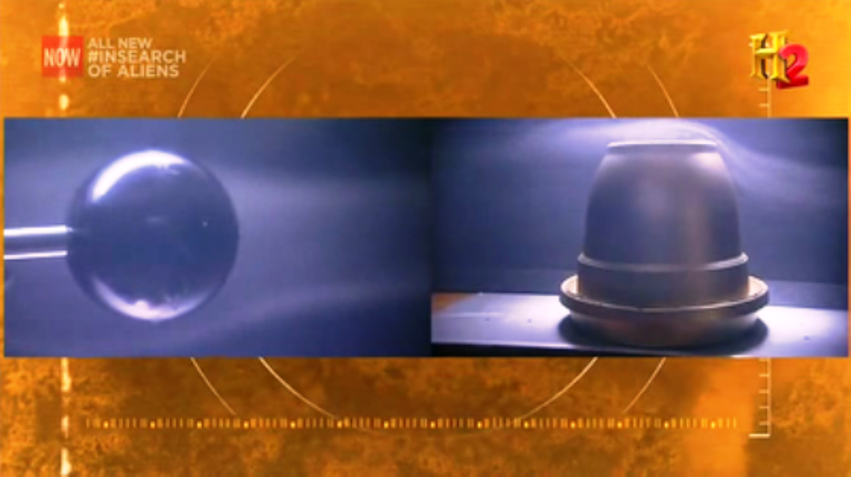
The Bell wind tunnel experiment
"In Search Of Aliens"
proved that the Bell shape
was a better shape for
wind resistance than a sphere
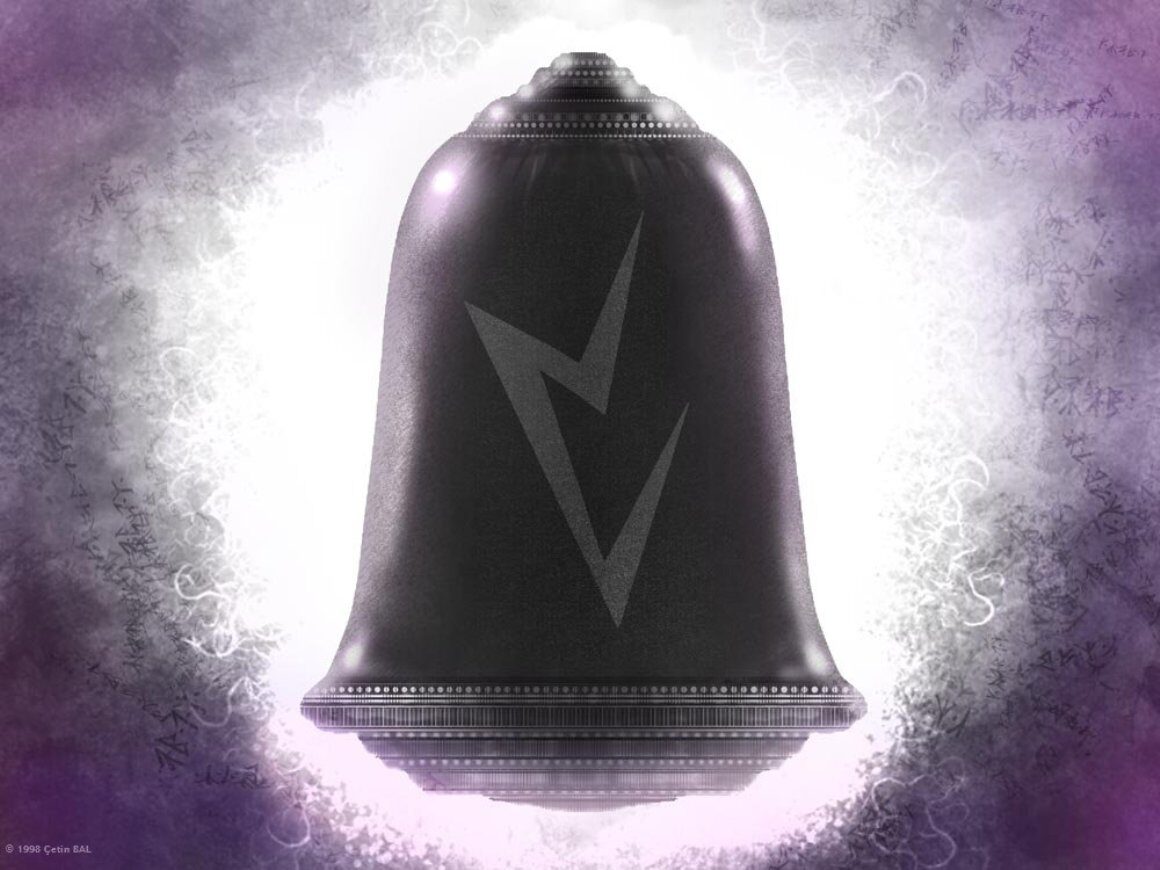
The video “The Nazi Bell: Secret Anti-Gravity Technology” is for an Internet audience of people that believe the Nazis had the technology for Anti-Gravity Bells that were “chained so they do not take off into the sky”.
The underlying source input data turns out to be a patent from Hanhart, a well-known Germany manufacturer of Chronographs.
Some people were reading reading the word "Chronograph" and knowing the word “chronos”, assumed it must have had to do with time travel - because there is also a scene in the video that assumes the Nazi Bell was a time machine.
Below are photos of the patent regarding the Chronograph; or the “Glocke". It is not-a-time-machine nor an Aniti-Gravity Device,
It is basically a watch.

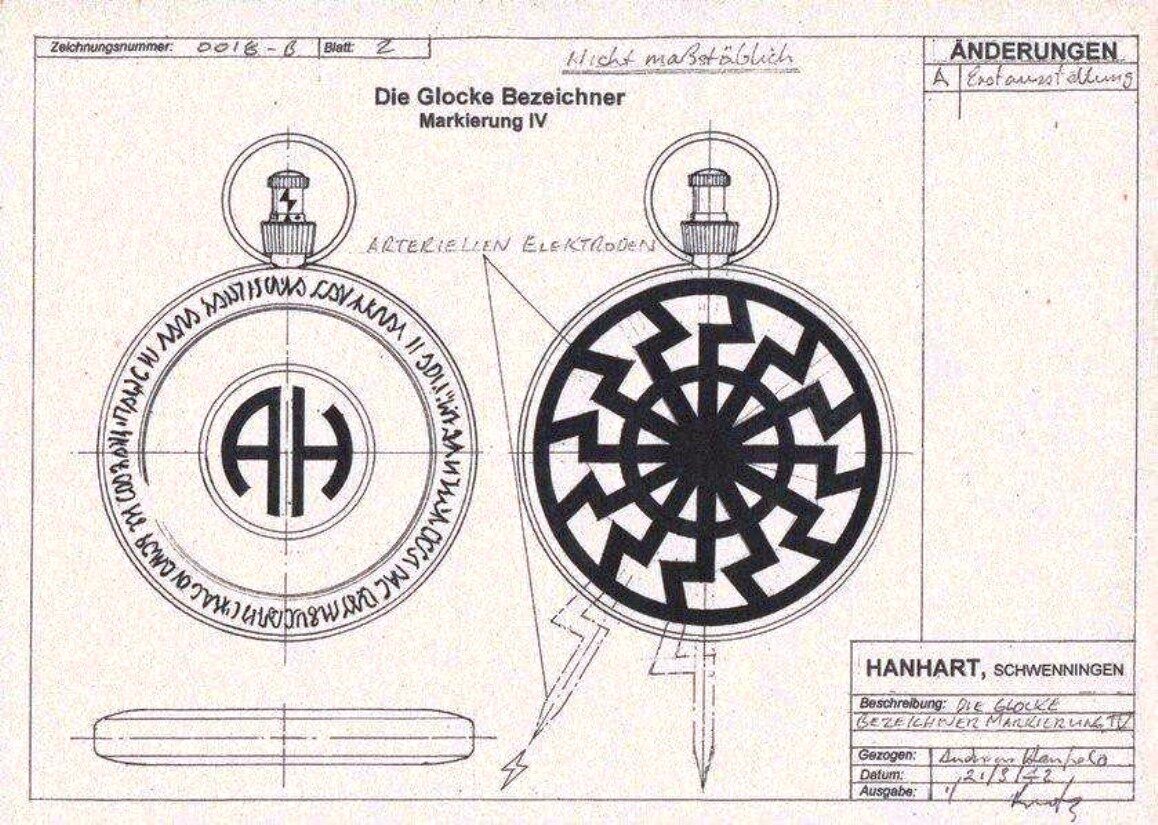
It describes a pocket watch, or chronograph which is able to display not only hours and seconds, but also years, months and days.
There is also another feature to measure the width and height of objects.
The button on top changes the functions of the chronograph and toggles between a "relative" mode [like in Olympics competitions] and absolute mode to display the current date/time.
.It has some electrodes that are connected to the back cover, which are probably either for recharging or anti-static purposes.
The second photo of the document describes the front and back cover of the watch.
As the patent is a design document, it does not describe the internals of the watch, so it is unknown whether it was already of electrical nature or it still used a mechanical source of energy [like a gyro wheel].
Roswell’s Dirty Secret: The Time Nazis Crash-Landed in the New Mexican Desert
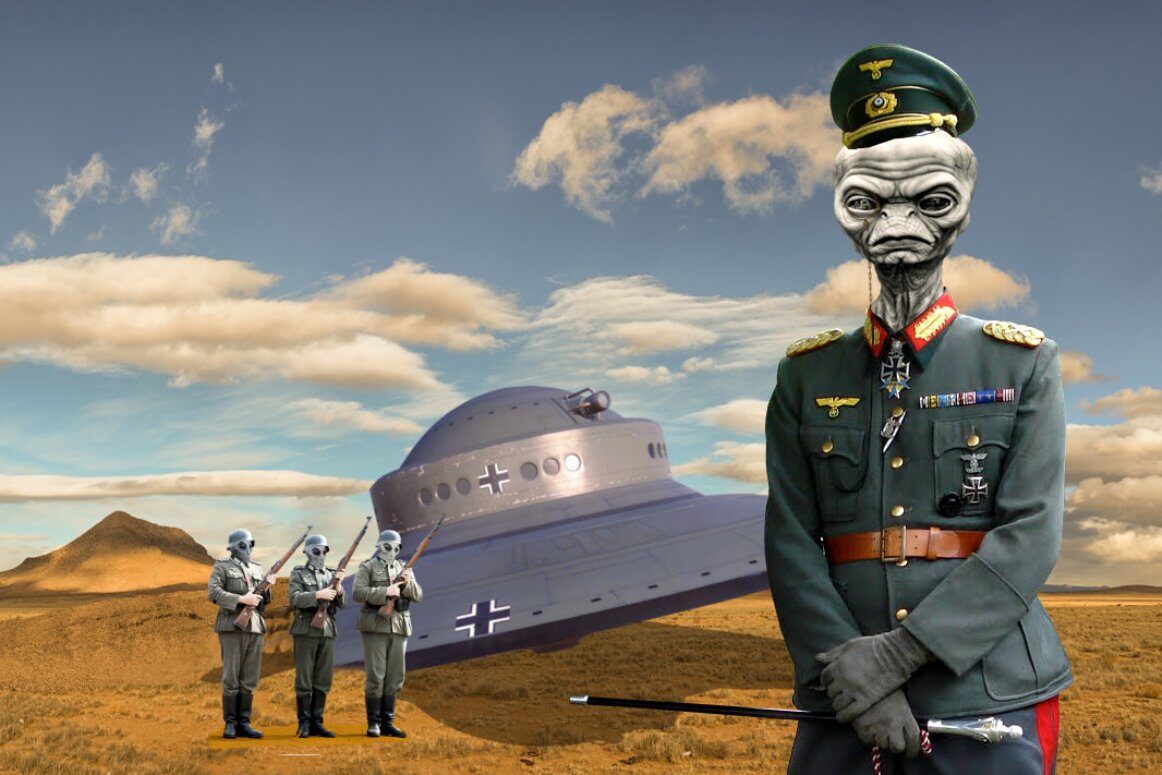
What exactly crashed in the open terrain of the US Southwest back in 1947? Was it a weather balloon? Aliens from a far-off galaxy? Or even worse… could it have been the Nazis?
A new German documentary, "UFOs and the Third Reich", aired last month on Channel N24 and made some bold claims about flying saucers.
The main claim is that the real secret behind the Roswell crash was that it was a high-tech stealth aircraft made by Nazis.
Well, in fairness, they weren’t still Nazis when they built it.
Thanks to Operation Paperclip, many German scientists were secretly relocated to the US at the end of World War II.
Instead of facing war crimes, they were put to work by the US government to help beat the Soviets in the "space race". Undoubtedly, allowing people like Hans Kammler [who organized the forced labor factories at Auschwitz] to escape any form of punishment to gain a scientific edge casts its own black shadow over the already dark, elusive, and controversial study of UFOs.
Between 1941 and 1943, fifteen prototypes of what’s known as the Schriever-Habermohl Model were said to have been built in Prague.
Named for its designers, engineers Rudolf Schriever and Otto Habermohl, this craft bears an uncanny resemblance to what we now think of when we hear the term “flying saucer”.
Flight was achieved through a combination of rotary wings like a helicopter and let engines mounted beneath the disc-shaped craft. The blueprints for these craft are believed to have been taken to the US in 1945 where work continued. It’s one of these American versions that the filmmakers allege crashed two years later in New Mexico.
Under Hitler’s command, the Nazis experimented with peculiar and radical aerospace technology, most notably “Die Glocke“, a bell-shaped metal chamber measuring 15 feet tall and nine feet in diameter intended to fly without wings.
It is believed that work was carried out to create 15 prototypes in Poland’s Owl Mountains in secret subterranean labs hidden inside the Wenceslas Mines which were later dynamited when the tide of the war turned against the Nazis.
According to historian and former Polish journalist Igor Witkowski in his book "The Truth about The Wunderwaffe", test flights of Die Glocke were conducted over Germany and Czechoslovakia.
A German engineer named George Klein supports Witkowski’s claims that such an aircraft existed. He told the "Daily Express":
“I don’t consider myself a crackpot or eccentric or someone given to fantasies… This is what I saw, with my own eyes: a Nazi UFO”.
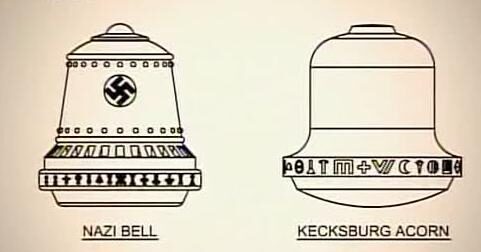
Klein wasn’t alone; many American and British airmen also witnessed strange craft, including the Schriever-Habermohl Model and possibly Die Glocke, over Nazi-occupied territory.
And if Roswell was a Nazi craft, what can be said about the famous Kecksburg UFO of 1965?
Resembling an upside-down acorn, Die Glocke was thought by many to have been an idea never brought to life.
Looking at diagrams for Die Glocke and the object which crashed into the woods outside Kecksburg, it’s hard to deny the similarities.
The US allegedly obtained plans for these craft around 1943, and some believe they experimented in building their own version.
Could Die Glocke [or an American counterpart] have been launched, reached too high of an altitude and orbited the Earth as a satellite before reentering the atmosphere where it became a fiery meteor landing in Pennsylvania?
If there was ever a good reason for a government conspiracy covering up a crashed unidentified flying object in New Mexico outside of Roswell, it being a top-secret Nazi aircraft is most certainly a good one.
To those who claim that the Roswell incident can be explained by the crash of a Project Mogul balloon, it must be pointed out that a balloon is a balloon is a balloon.
Neoprene is synthetic rubber, and metal foil and balsa wood were very familiar materials in 1947. There is no way on Earth that Major Jesse Marcel, the Intelligence officer involved, would not have recognized a balloon, whatever its purpose.
Had he reported a balloon as a crashed “flying disc” his career would have ended that day…but he was later promoted.
His commander, Colonel William H. Blanchard, authorized a press release stating that it was a “flying disc,” yet he was promoted all the way to four stars.
And if the wreckage was that of a mere balloon, why was no writing in English found, why no “made in USA” or “property of US government, “ or directions telling anyone who found it to call the nearest Army base?
And the Mogul balloons were really trains of balloons held together by long cords. Why was no cord reported?
Clearly something crashed at Roswell, and clearly it was not a balloon of any kind, and clearly it was of interest to the Army Air Force.
The possibility that it was interplanetary cannot be ruled out, but neither can the possibility that it was man made, whether developed by researchers working in the US, or by the Soviets, or by some secret group of Nazis operating independently.
Perhaps the most likely explanation [but not necessarily the correct one] is that the object at Roswell was designed by Nazi scientists working for the US under the auspices of Operation Paperclip.
The magical aspects of the crash might be explained by the Nazi obsession with magic and occult lore, an obsession matched by the Freemasons in the US government. The “hieroglyphics” reportedly seen on the fragments found at Roswell might well be Germanic runes of the kind found around the “Black Sun” symbol at Wewelsburg Castle.

